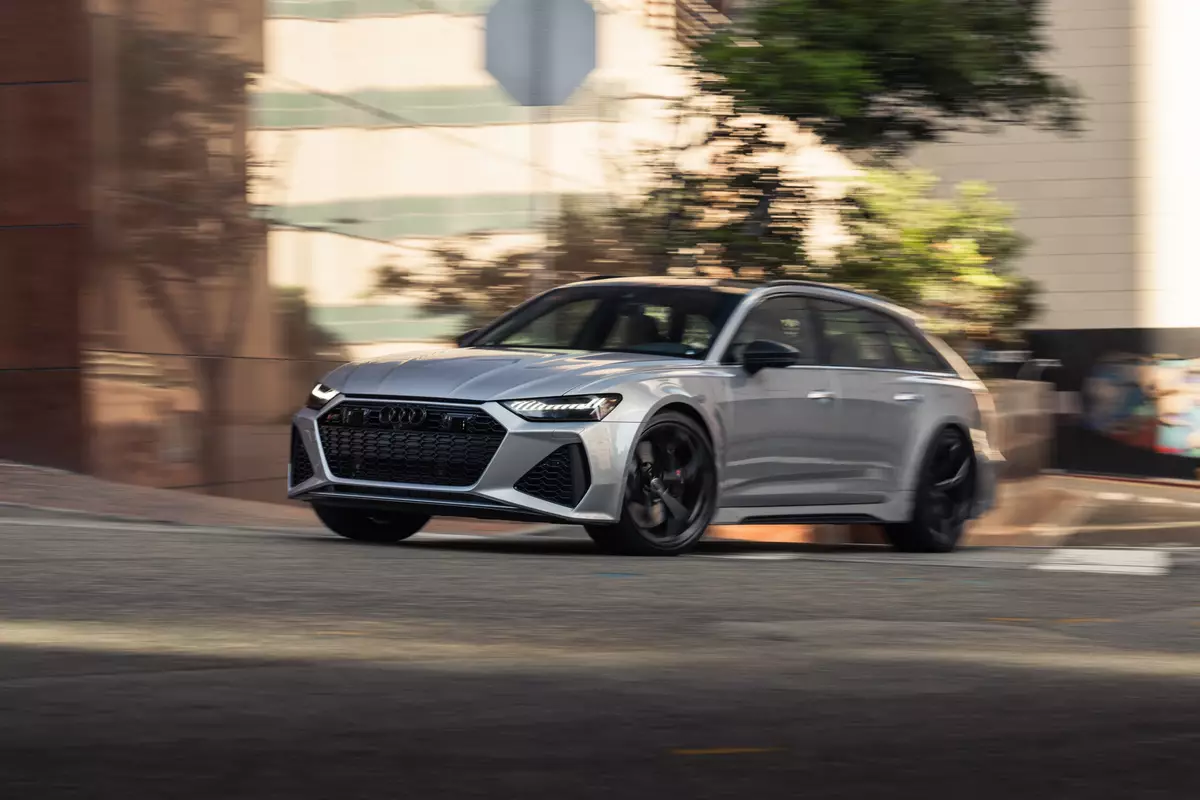2025 Volkswagen ID. Buzz Vs. 2024 Kia EV9: Which Is the Better Family EV?
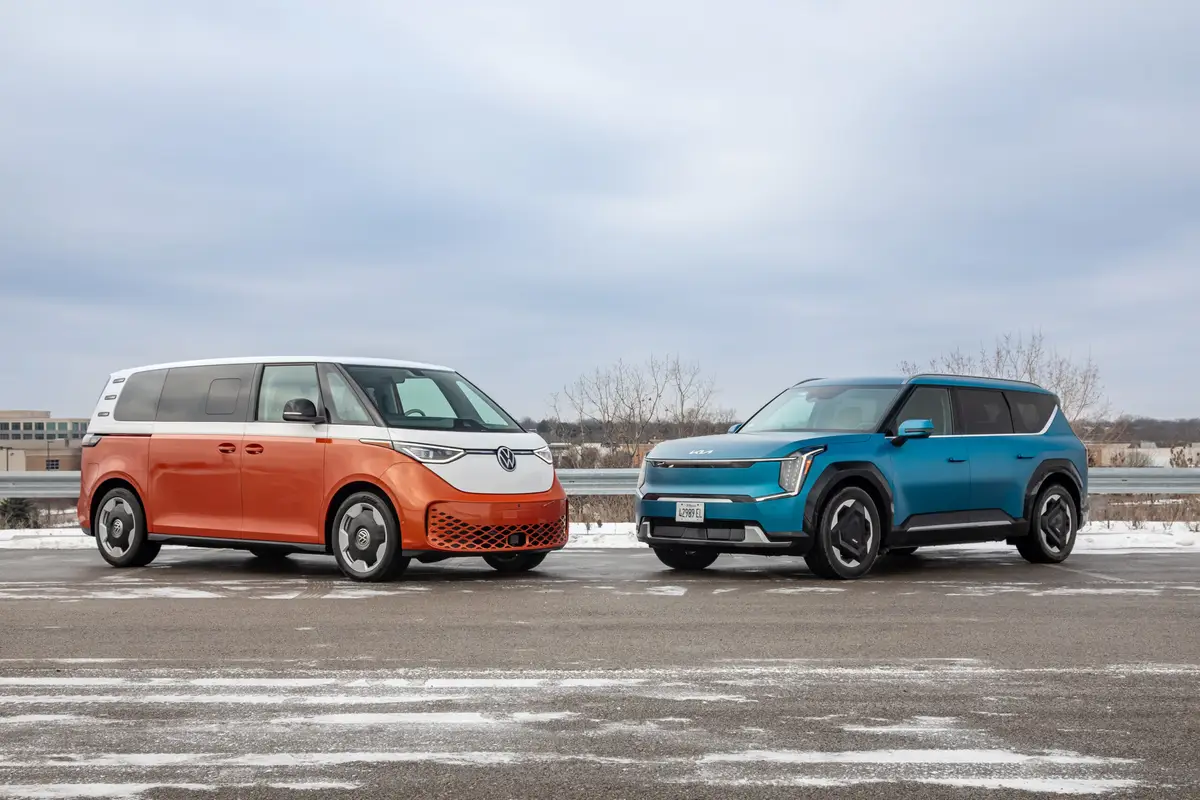
With the arrival of the 2025 Volkswagen ID. Buzz van, car shoppers have another all-electric three-row vehicle to consider — and Kia already has another competitor to its EV9 three-row SUV. Now, we know these two electric vehicles look quite different, but they also have some things in common, including as-tested pricing that’s within a few thousand dollars of each other.
Related: Is the 2024 Rivian R1S Worth Almost $30,000 More Than Our 2024 Kia EV9?
The Volkswagen ID. Buzz is a modern, all-electric take on VW’s iconic Bus and all-new for the 2025 model year. Our test vehicle was a Pro S Plus trim level with all-wheel drive and an EPA-estimated driving range of 231 miles on a full charge, and its as-tested price was $70,540 (all prices include destination). The ID. Buzz’s dual-motor powertrain makes 335 horsepower and is powered by a 91-kilowatt-hour battery pack, and the ID. Buzz can DC fast-charge at up to 200 kilowatts, according to the automaker.
The Kia EV9, meanwhile, is our long-term test car that we purchased nearly a year ago. It’s a Land trim with AWD and an EPA-estimated 280 miles of range from its 99.8-kWh battery. It’s a bit more powerful than the VW (379 hp), can DC fast-charge a bit quicker (up to 210 kW) and is also more expensive ($74,305 as tested, though if you purchased the same vehicle today, it’d be slightly cheaper since the matte-blue paint ours wears has been dropped for 2025).
Even though one is a retro-futuristic van and the other is a futuristic SUV, at their core, these EVs are both people movers, so we put them to the test to see which is better when it comes to everything from interior space and comfort to real-world efficiency. Read on for our thoughts on how they rate, or skip to a specific section using the links below.
- Interior Space and Comfort
- In-Cabin Storage
- User Interface
- Interior Quality
- Cargo Space
- Driving Experience
- Cold-Weather Efficiency
- Which Is Right for You?
Related Video:
Interior Space and Comfort: ID. Buzz
The verdict: If you need maximum occupant space across all three rows of seats, the ID. Buzz is for you.
Mike Hanley, senior road test editor: You sit up high in the VW’s driver’s seat, and it’s a bit of a climb there — so much so that some drivers might like running boards to make getting in easier. Once you’re seated, the driving position is more delivery van than minivan, and the upright windshield and extended-forward roofline can make it hard to see overhead stoplights. I had to tilt my head to the side to see when the light turned green.
The VW’s seats aren’t quite as comfy as the Kia’s first and second row, but they’re still good overall, and the ID. Buzz has so much overall passenger space — especially in the third row, which is as roomy as the EV9’s spacious second row. The Kia’s two-person third row is much smaller than the ID. Buzz’s rearmost seat; adults can make it work if second-row passengers are willing to share some legroom and slide their seat forward a bit, but even then, it’s still pretty tight. The EV9’s third row is best suited for children, while the ID. Buzz’s third row has no trouble with taller adults.
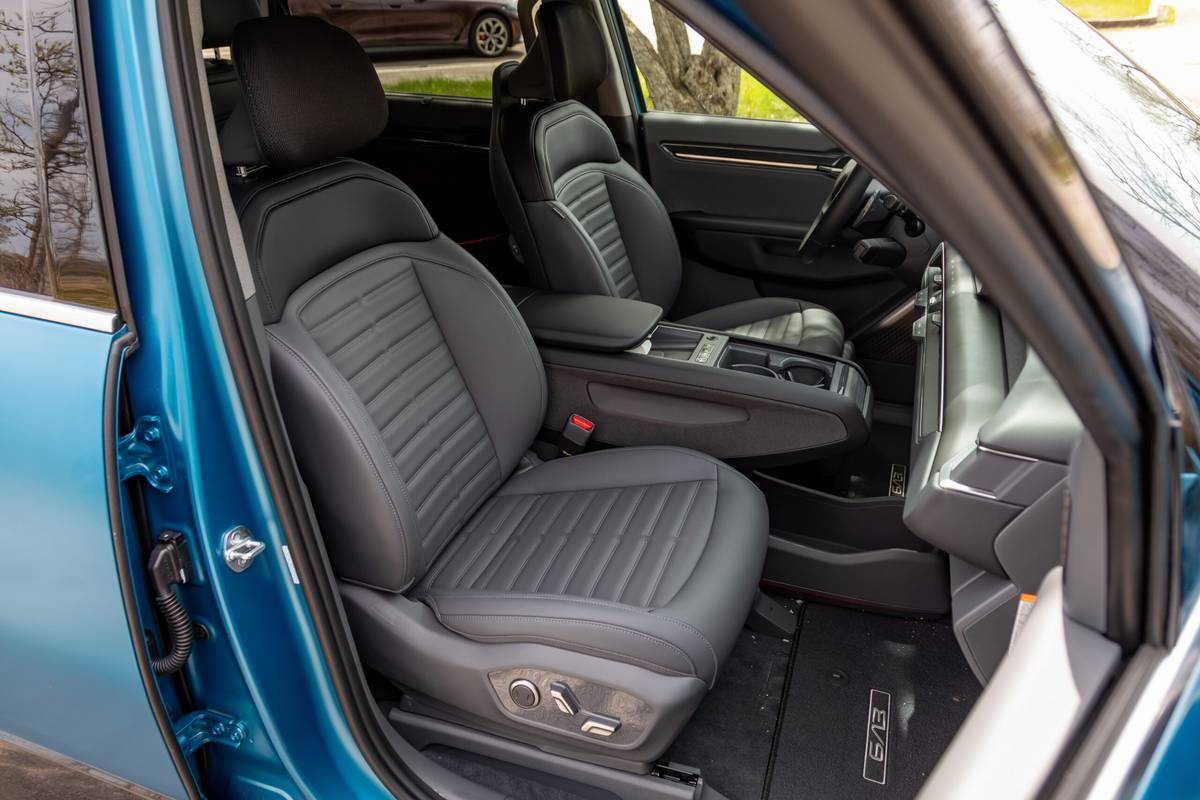
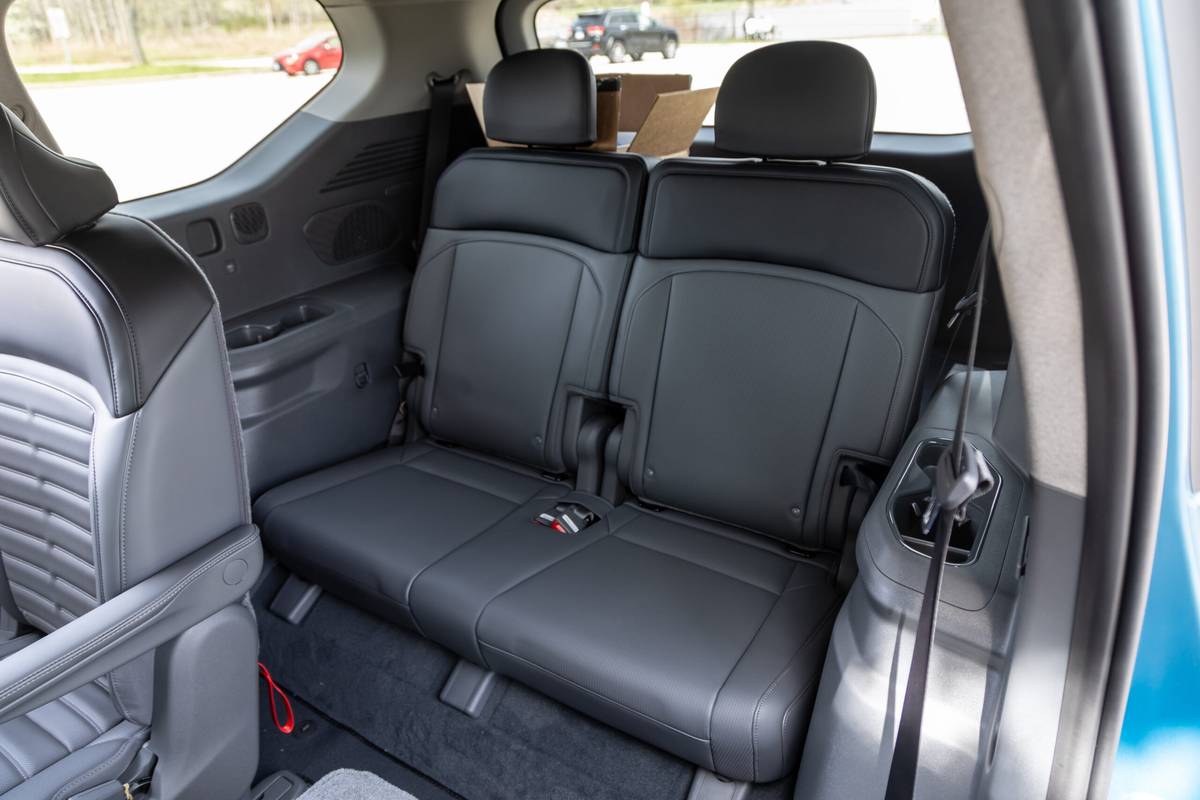
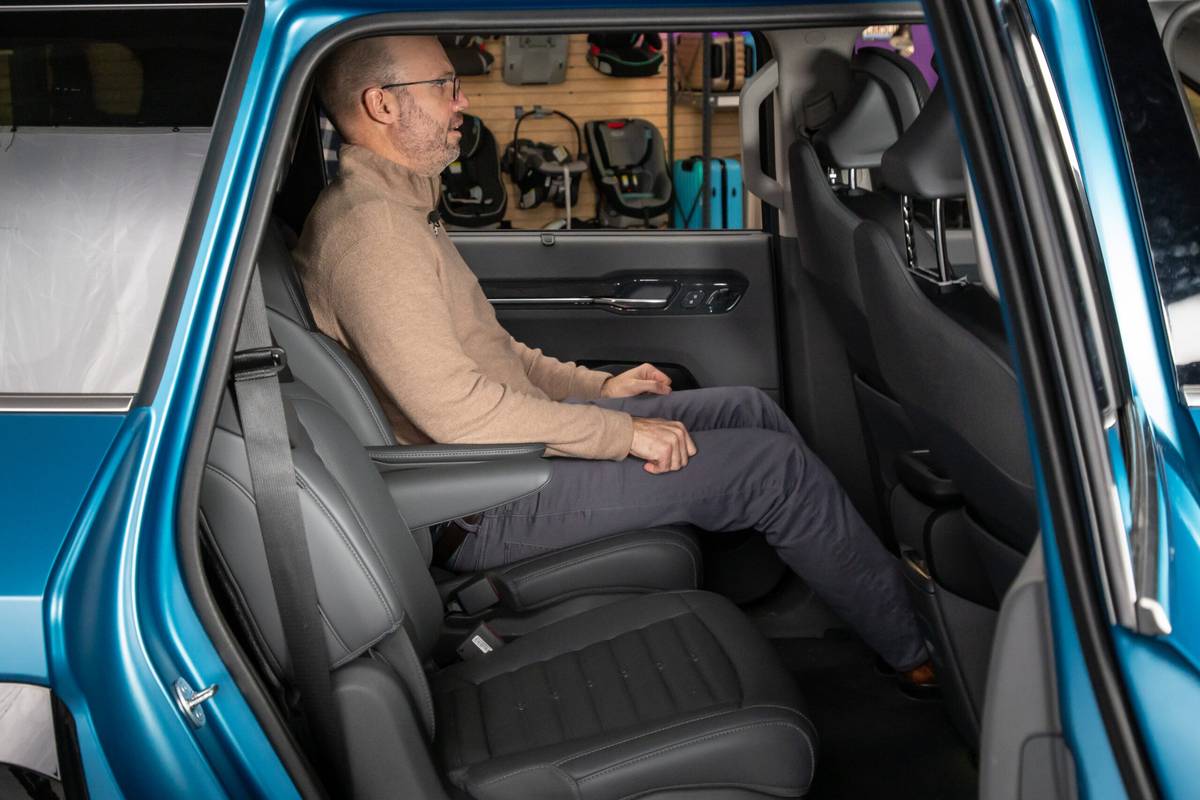
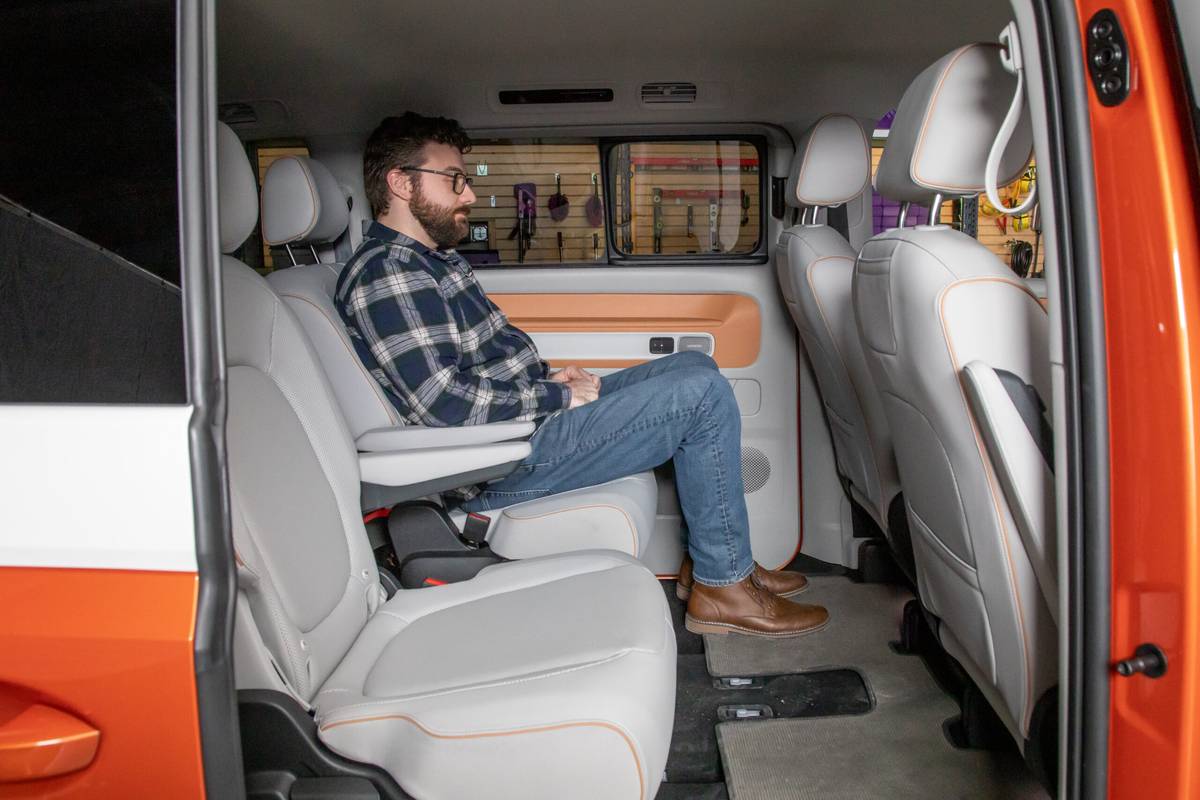
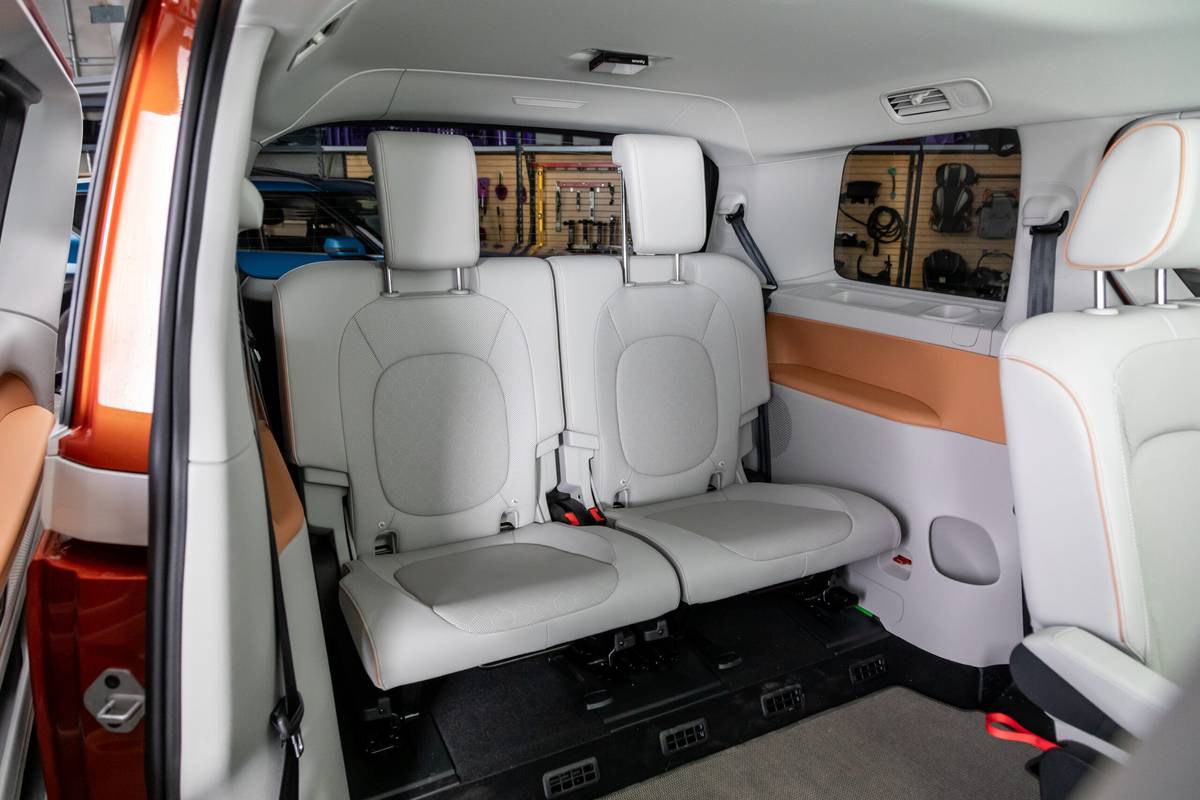
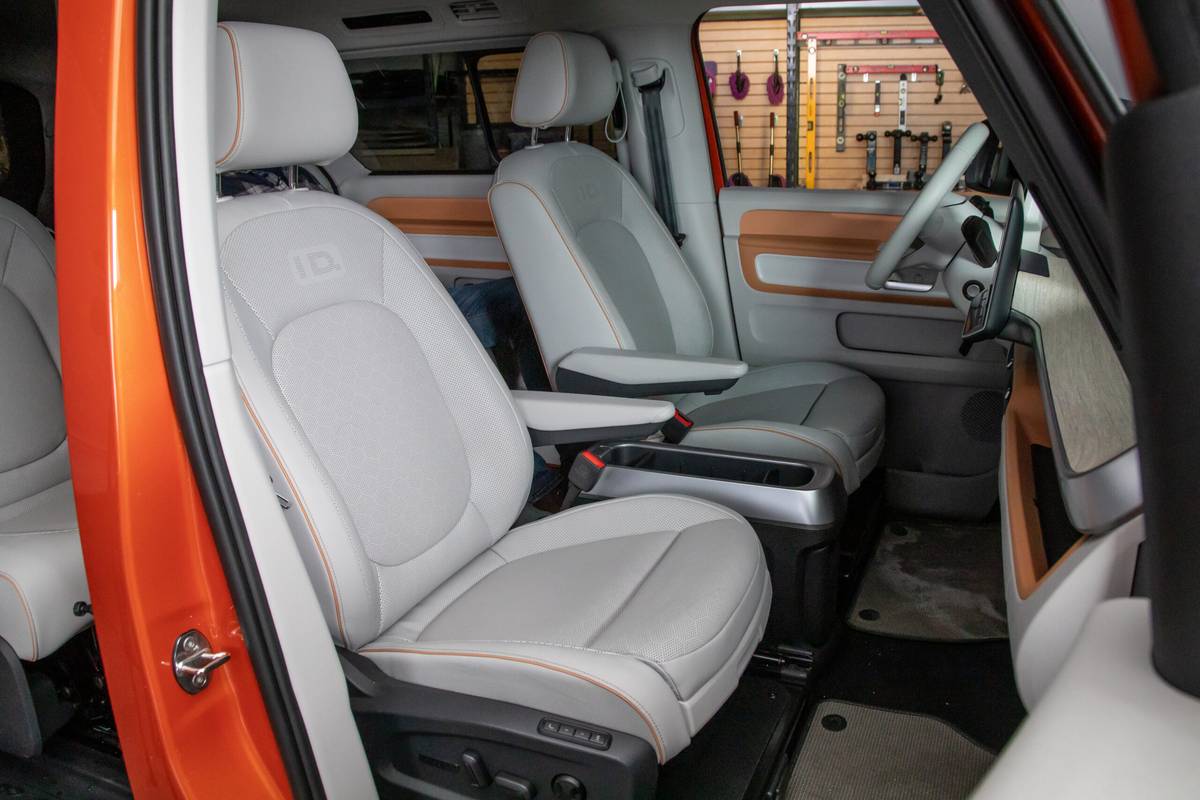






Brian Normile, road test editor: In terms of front-row comfort, I give the edge to the EV9; its front seats are better cushioned and fit me better than those of the ID. Buzz, though the VW isn’t an uncomfortable place to be.
The VW’s longer wheelbase is apparent when you’re in the second row; while the EV9’s second row is great, the ID. Buzz is even roomier and more comfortable. The Kia’s ventilated captain’s chairs, integrated window sunshades and an open cabin feel with a dual moonroof setup can’t save the Kia here. Give me space every day.
When it comes to the third row, what’s still a strong suit for the EV9 is even stronger for the ID. Buzz. I fit in the third row of the Kia but would rather not sit there; I would have no qualms about sitting in the wayback of the VW. The EV9 does have one-touch second-row folding and sliding for easier third-row access, but the VW’s is easy enough to use and has a bigger opening.
In-Cabin Storage: EV9
The verdict: The Kia’s larger bins and storage spaces are more useful for storing things you’re likely to bring with you when you’re on the road.
MH: The EV9’s front center console has space for odds and ends as well as drinks, and larger items have a spot, too, thanks to an open lower storage area. The interior of the ID. Buzz is open and roomy, but there’s not great storage space for smaller items: The center console between the front seats is small, and the storage areas on it aren’t that big, either. The VW’s console does have a small bin that opens from the backside, but it’s much smaller than the one in the EV9.
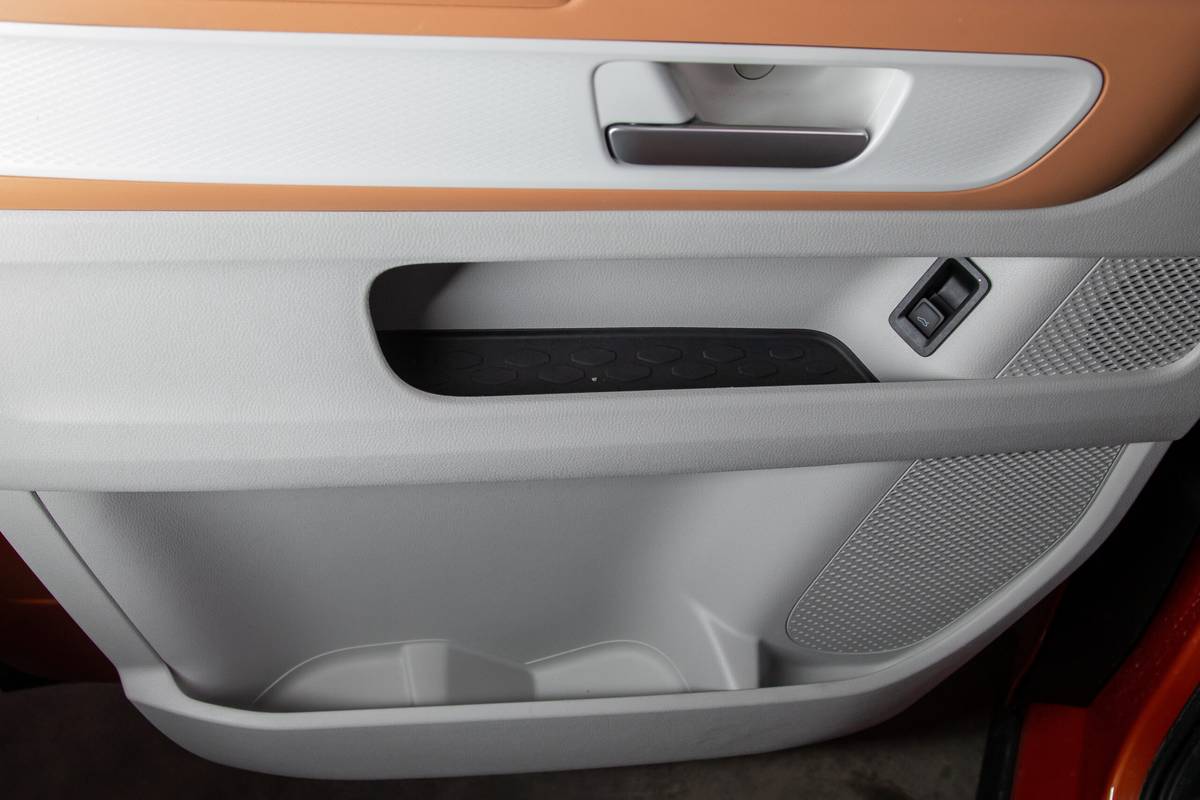
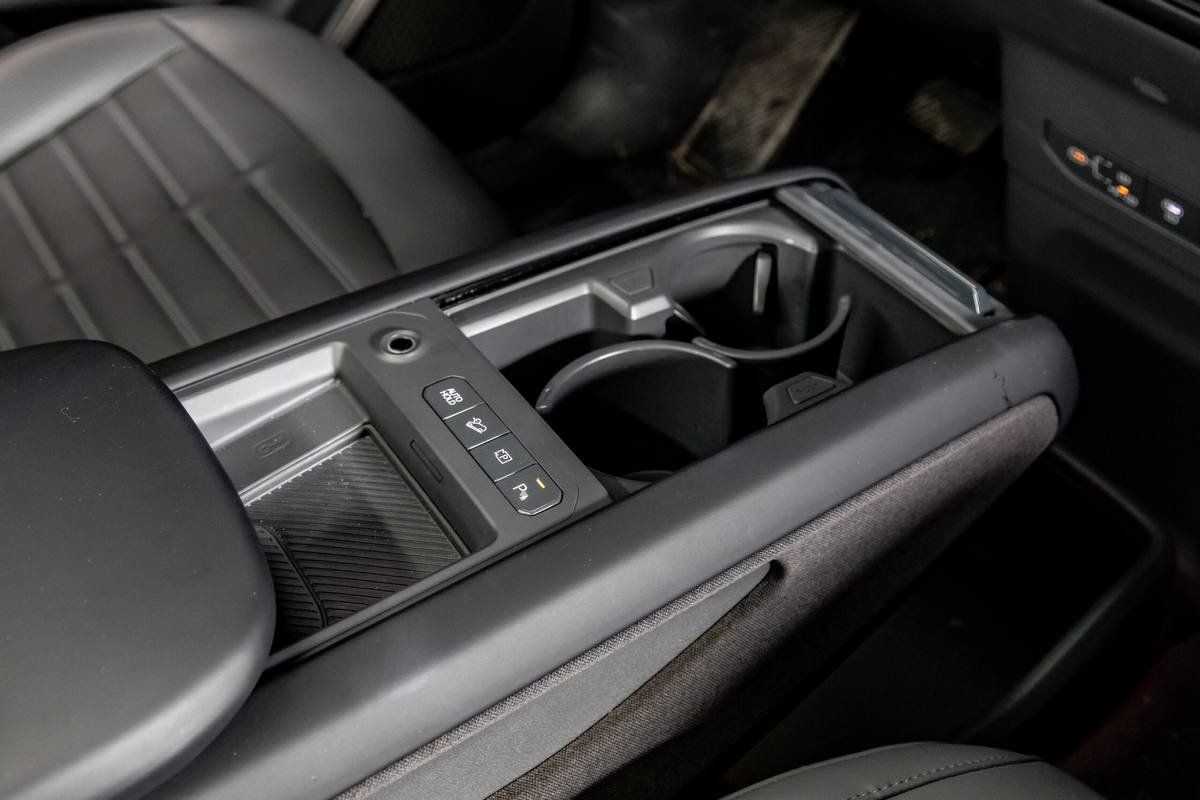
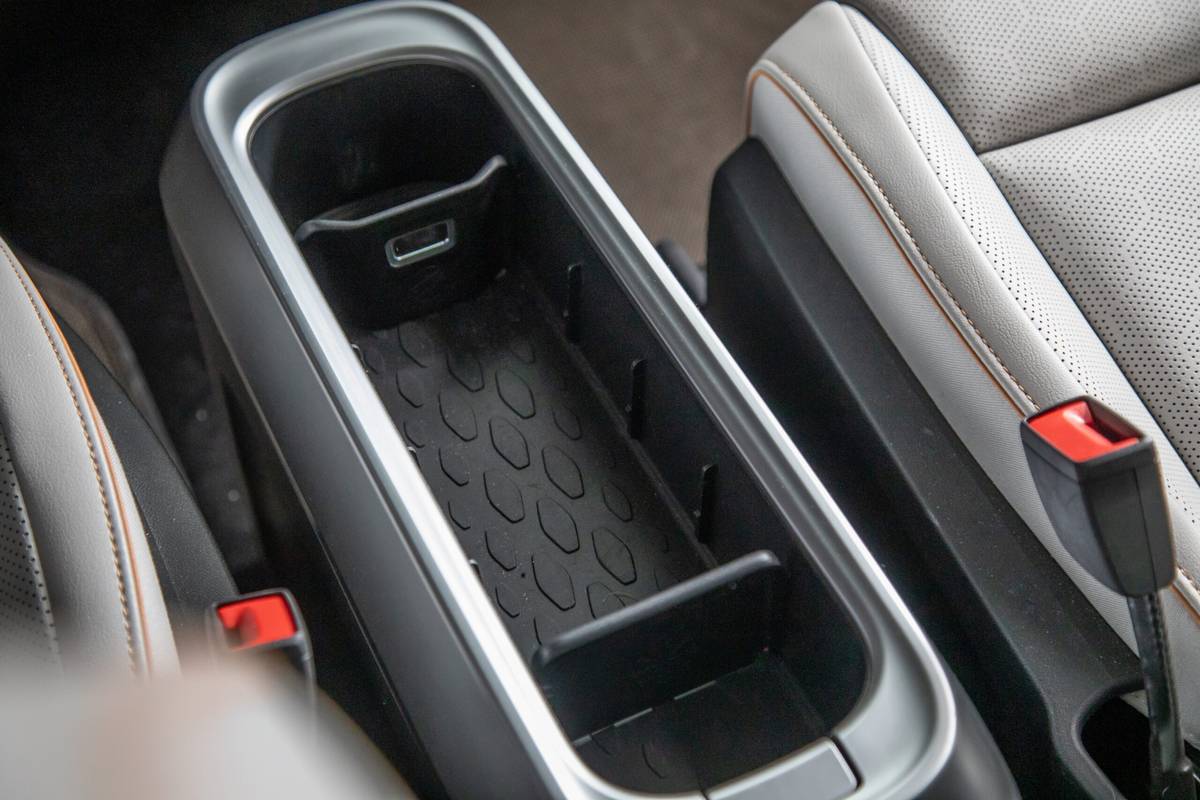
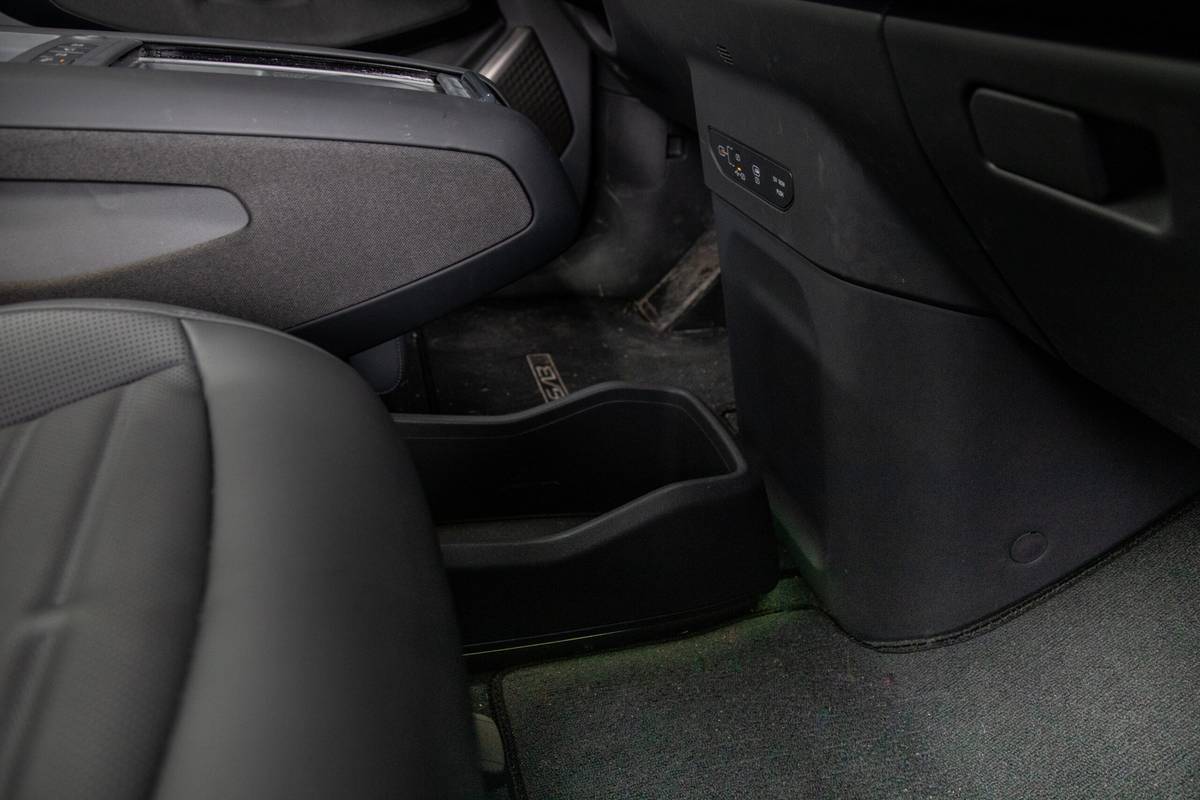

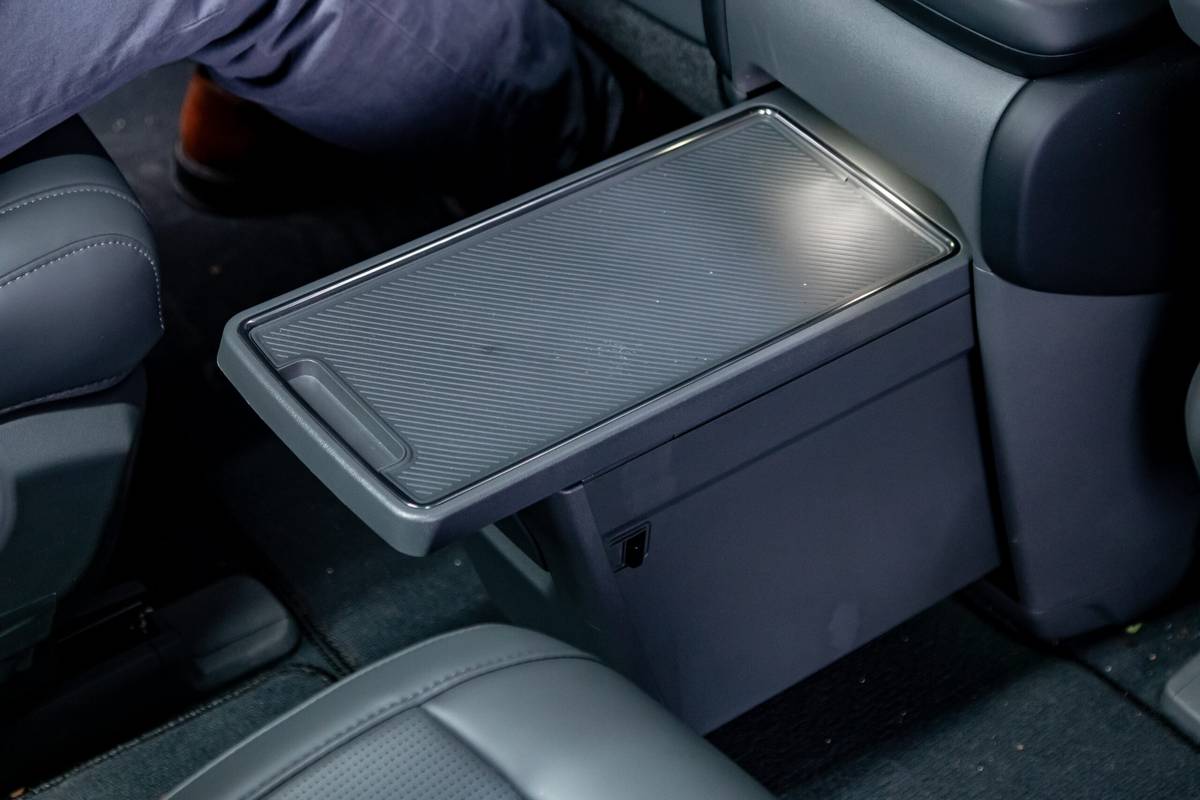
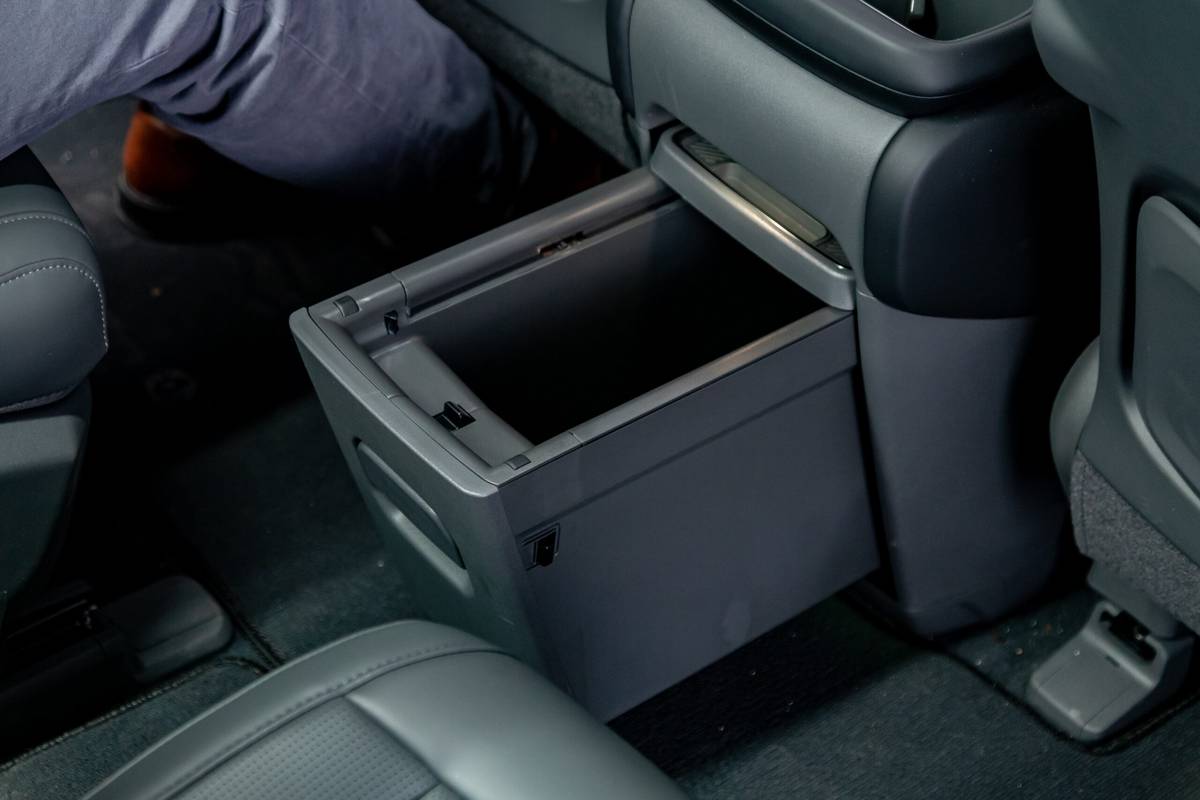







BN: While I love some of the small-items storage spots in the front of the ID. Buzz, there’s just not that much total space dedicated to storage. There’s a ton of space, and you can easily put a backpack or purse up front, but it’ll just sit on the floor. The movable center console is nice, but I’d like another one for second-row passengers instead of having to share the sole one up front. Fun touches like dividers in the center console top bin that double as a bottle opener and ice scraper are just that: fun, not especially practical. The nearly hidden wireless phone charger next to the steering wheel works well, but it doesn’t fit my phone and case (Apple iPhone 12 with an Otterbox Commuter Series case), which annoys me as a clumsy person who needs a case to keep my phone safe.
The EV9’s storage setup is much more useful though far less interesting to talk about, with a larger console bin, a large-items space below the center console, and better implementation of the slide-out bin and tray for second-row passengers.
- ${price_badge()}
- ${ami_badge()}
- ${battery_badge()}${ev_report_link()}
- ${hot_car_badge()}
- ${award_badge()}
- ${cpo_badge()}
${price_badge_description}
${ami_badge_description}
The EV Battery Rating is based on this vehicle's current expected range relative to the vehicles expected range when new. ${battery_badge_text}
This vehicle is certified pre-owned, backed by a manufacturer warranty, and typically undergoes a rigorous multi-point inspection to ensure quality and reliability.
This vehicle is currently in high demand given its competitive price, desirable features, and overall condition, and may have a higher chance of selling quickly.
Shop the 2025 Volkswagen ID. Buzz near you
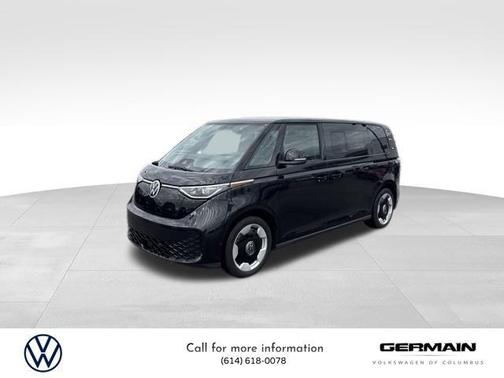

User Interface: EV9
The verdict: The EV9’s relatively traditional layout and its inclusion of physical controls for key features puts it ahead of the ID. Buzz, which is doomed by an interior that’s heavy on touch-based controls.
MH: The EV9 gets my vote here because its touchscreen infotainment system is intuitive, and its interior still relies on buttons for often-used features (like climate-system temperature) and ones you want to have right at your fingertips (like the controls for the heated and ventilated seats). One downside, however, is the small climate system touch panel on the dashboard that contains additional controls: It’s partially obstructed by the steering wheel when I drive. You can, however, expand these climate controls to the central touchscreen for better access. The steering wheel also blocked some of the digital dashboard, making it difficult to see the camera views that appeared when the turn signal was on.
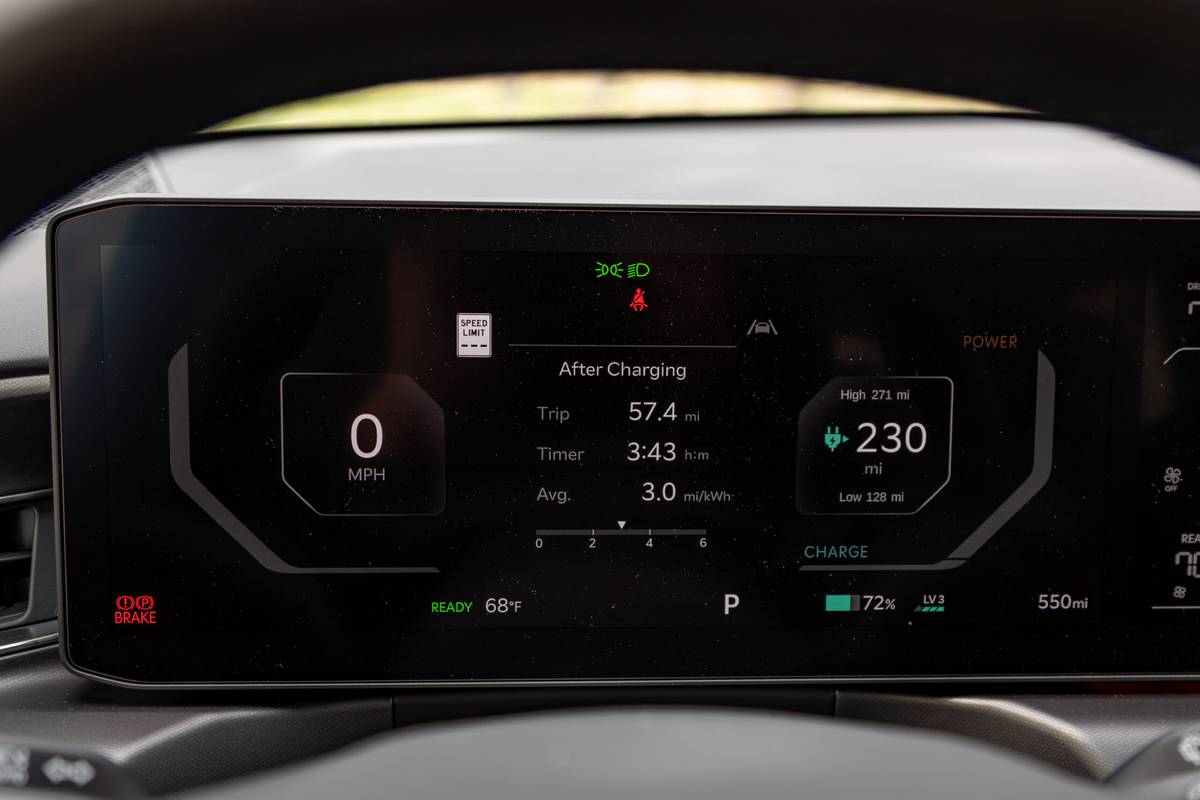


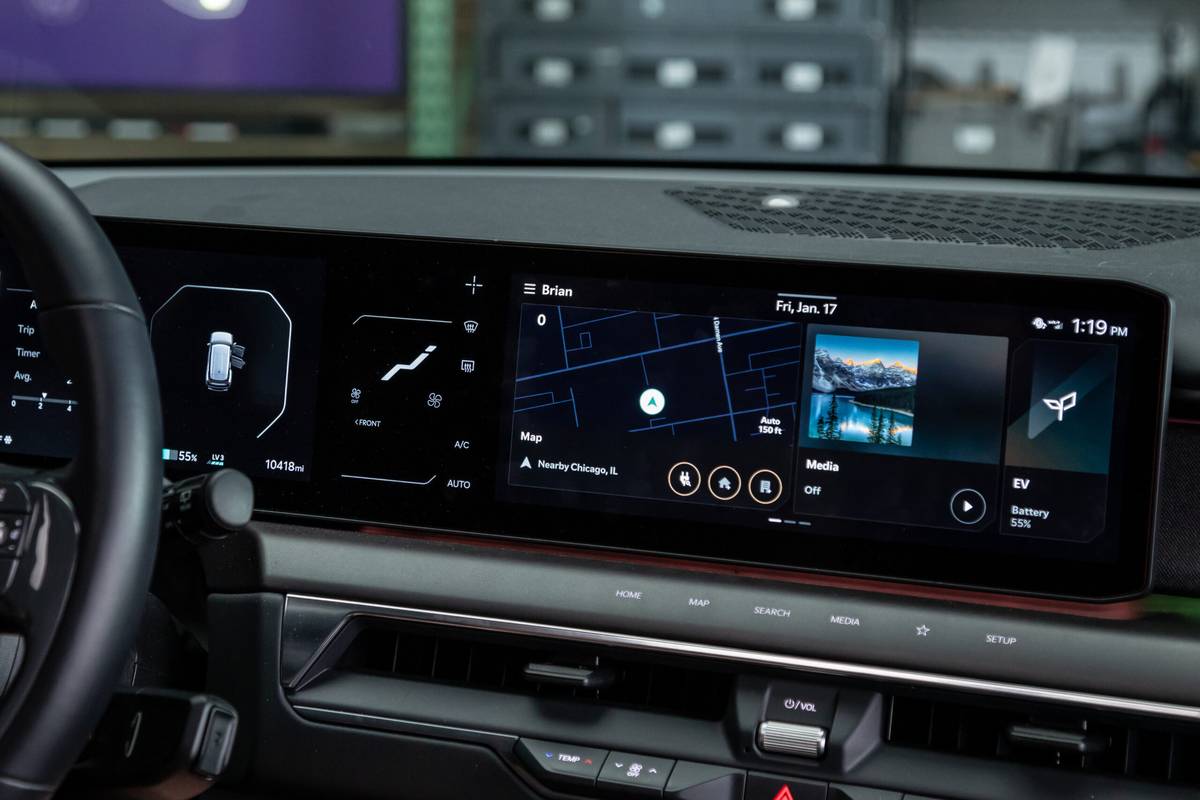
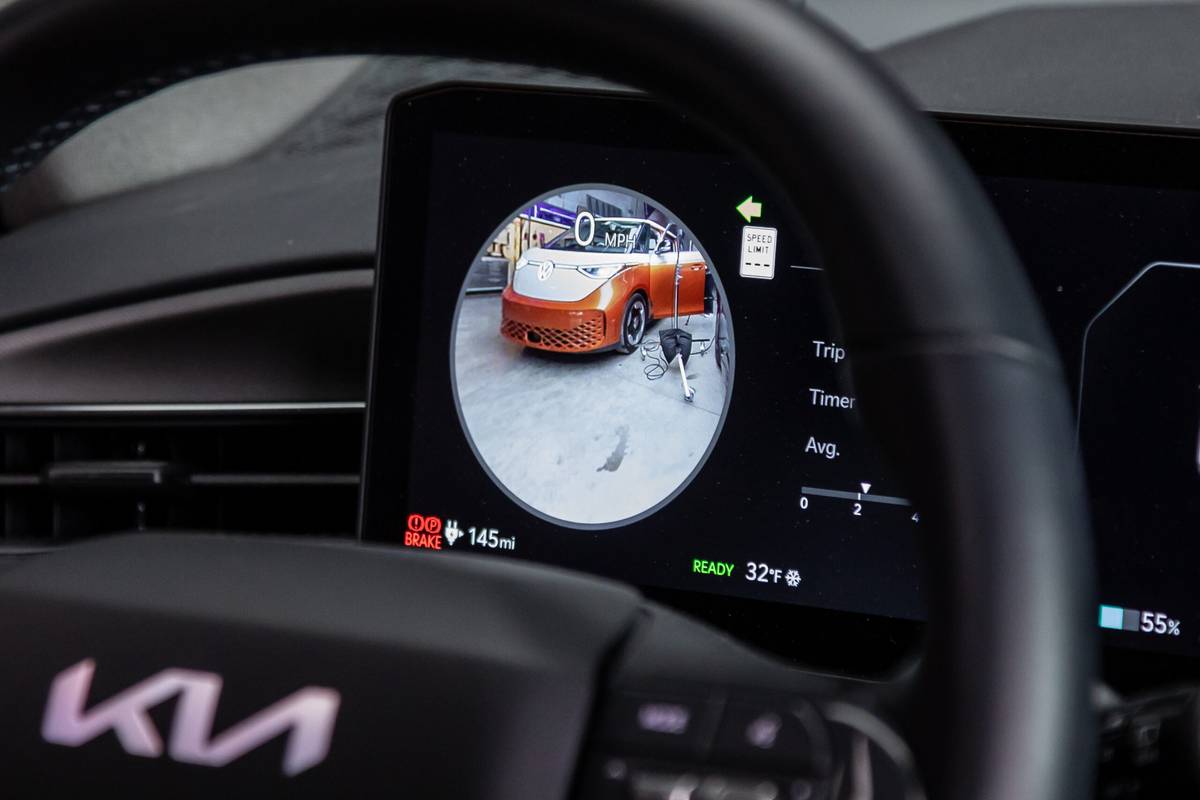





It’s fairly easy to use the ID. Buzz’s touchscreen infotainment system, which has reasonably intuitive tile menus, a home screen and a display with richer colors than the Kia offers. However, the VW’s reliance on touch-sensitive controls for features beyond the screen, something we’ve seen in other VWs, is still frustrating here. There are touch-sensitive steering-wheel controls, and when I was driving, I accidentally set the cruise control by swiping my hand against them. There are touch controls for volume and temperature, too.
BN: The VW’s UI is a constant source of frustration — and this is one of the “better” control setups the automaker sells. The touch-sensitive, multifunction (you can slide and press in some instances) steering-wheel controls are my biggest pain point, one VW has corrected in other models. Other controls are hard to see in certain lighting situations, and while the slider controls for volume and temperature are responsive and intuitive, they’re imprecise to use.
The infotainment screen itself has excellent graphics and is highly responsive — when it allows inputs. There are unnecessary pauses when adjusting the climate system, and the screen will lock itself on occasion for safety reasons. Some features are also buried in multiple menus instead of having dedicated buttons or other controls.
The EV9’s UI, meanwhile, is far more straightforward, with many more physical controls for frequently used features like climate, audio, camera and drive mode, and while its infotainment screen is slightly smaller (12.3 versus 12.9 inches) and more landscape-oriented, it still works well. The EV9 is not without its own control annoyances, however: The climate display is obscured by the steering wheel and hard to use while driving, and when using the touchscreen, I frequently hit the touch-sensitive controls below the screen when using that space to rest the heel of my hand (less often now that I’ve gotten used to it). The Kia’s drive mode selector/start-stop button combo is unintuitive, too.
Interior Quality: EV9
The verdict: Kia takes the crown by a little, but we have to shout this from the rooftops: Neither EV has a $70,000 interior.
MH: Materials quality in the EV9 is very good, with soft-touch surfaces where you want them to be for resting your arms, but the all-gray interior color scheme is a bit somber compared with the lighter-colored (and more generally colorful) interior of the ID. Buzz. Overall quality in the VW is good, too, but there’s not as much soft-touch trim for common interior touchpoints.
BN: The VW is solidly built and has visually interesting and quality materials on some surfaces, but it relies on a lot of plastic, too. The EV9, meanwhile, has more soft-touch surfaces and seemingly higher-quality upholstery and, despite more than 10,000 miles on its odometer, the interior doesn’t feel worn or especially creaky. Even so, it’s very boring-looking inside.
Cargo Space: ID. Buzz
The verdict: Measured cargo space is similar behind these EVs’ third rows at around 10 cubic feet by Cars.com measurements, but the ID. Buzz’s cavernous interior that benefits passengers also benefits cargo hauling when its third row is folded — and especially when it’s removed entirely.
MH: The ID. Buzz has a unique approach to cargo space, with a shelf that aligns the rearmost cargo area with the third-row backrest when it’s folded. There are soft-sided storage bins below the shelf, but these seem destined to get grimy like a reusable cloth shopping bag. The VW has 30.8 cubic feet of cargo space when its third row is down, and removing the third row opens up a massive amount of cargo space – 48.9 cubic feet by our measurements, which is more than double the EV9’s 23.4 cubic feet of space when its third row is down. However, each third-row section is heavy (around 60 pounds), and you must also remove the VW’s cargo area shelf to get maximum space; the EV9, by comparison, has a much more conventional cargo area that’s similar to what you’d find in a gas-powered three-row SUV.
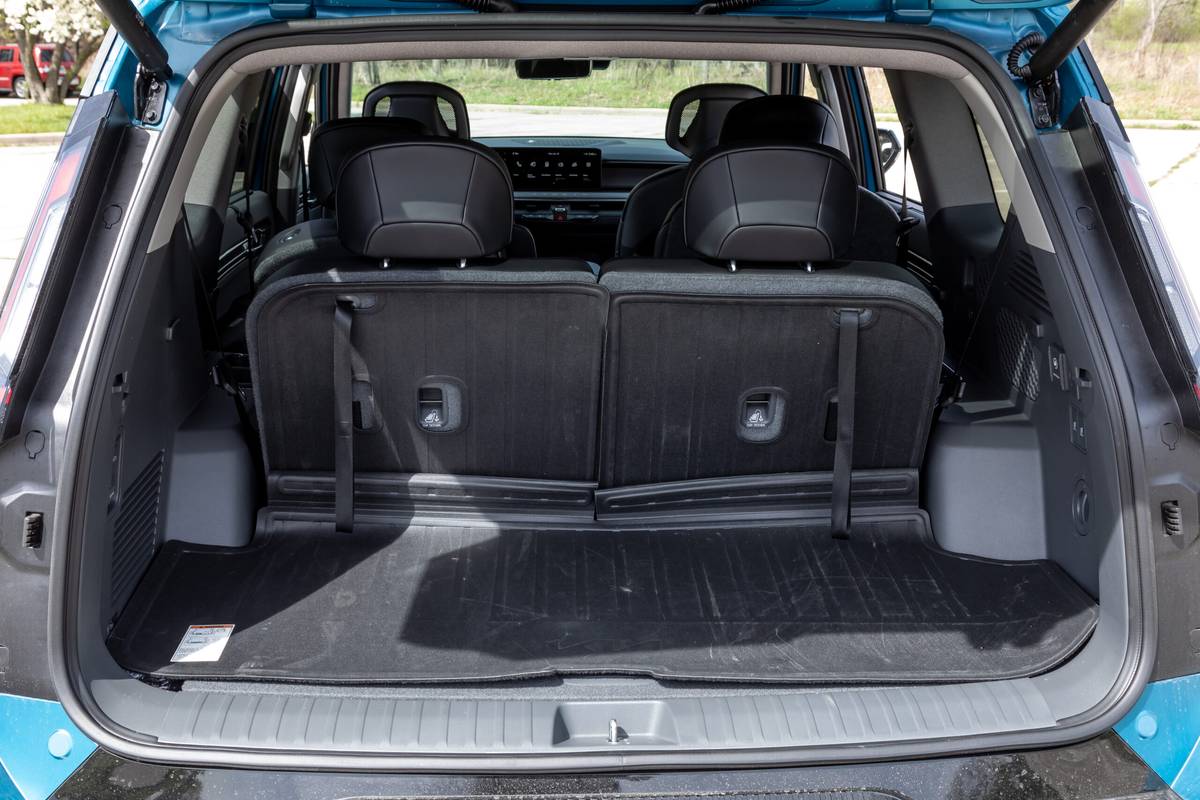
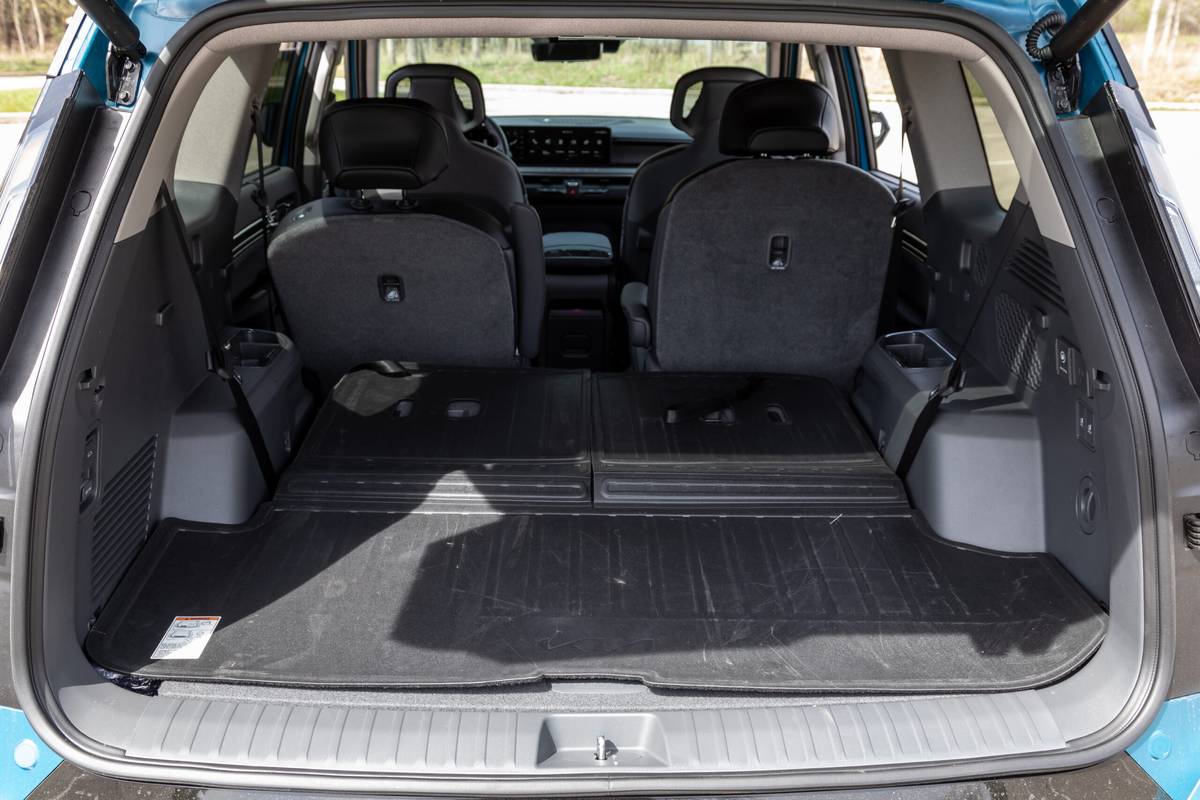

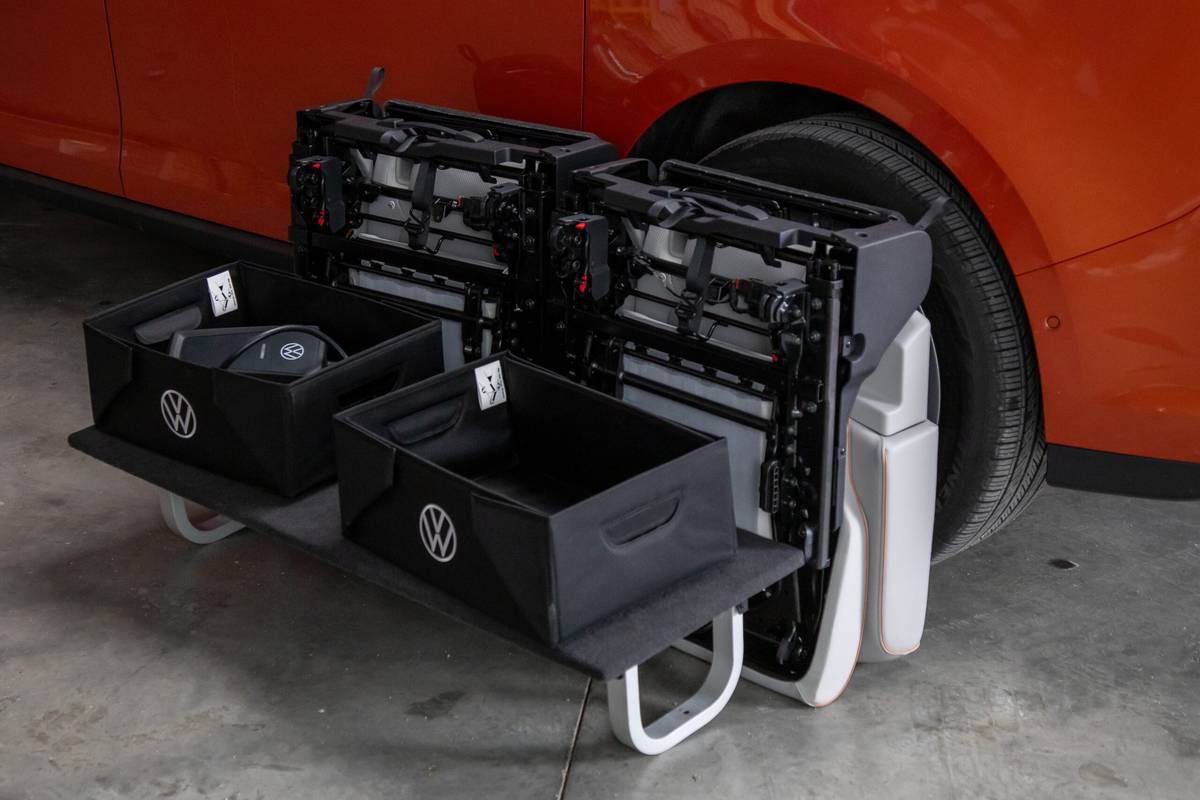
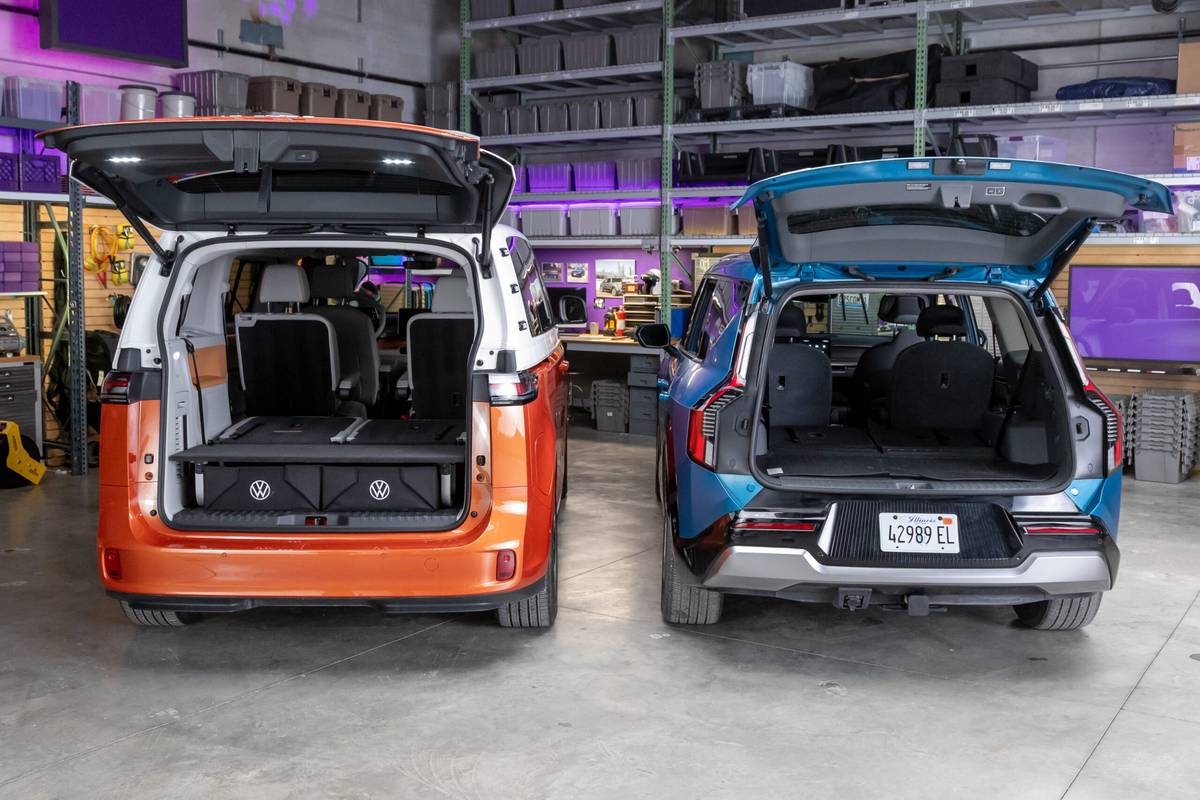
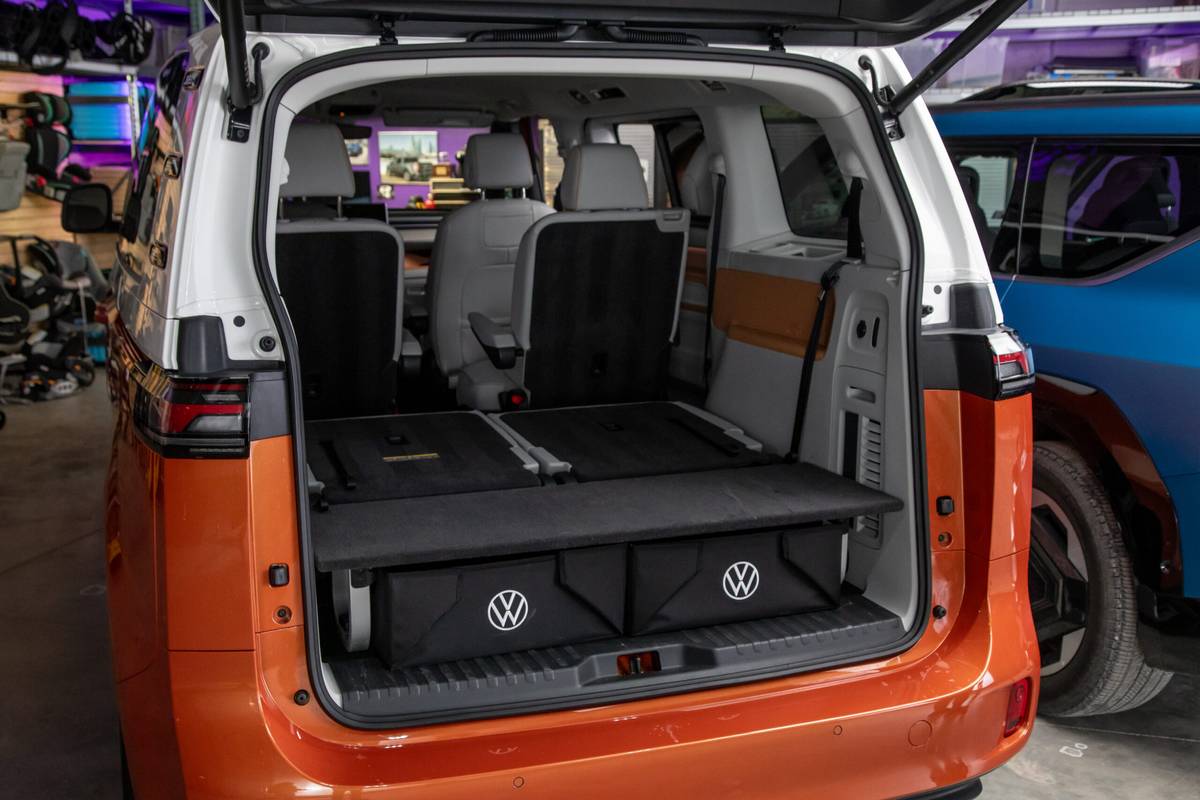






BN: The EV9 has a large cargo area with the third row up and an even larger one with it folded, as well as underfloor cargo storage and a small frunk. The ID. Buzz doesn’t have a frunk — unsurprising — but it has far more space in back. While the cargo shelf is useful and helps make a flat floor when the seats are folded, it raises the load floor considerably, removing an advantage (get it?!) of its design. With the shelf and the entire third row removed, you have a much more useful space for cargo, though you’ll need a place to put these things when not in use.
Driving Experience: ID. Buzz
The verdict: With its surprising agility and overall refinement, the ID. Buzz’s driving experience was a pleasant surprise, but its lower overall range is more limiting for longer trips.
MH: Even in the ID. Buzz’s Comfort drive mode, it felt more responsive than the EV9 from a standing start, with a more responsive accelerator pedal. Power delivery is smooth, quiet and predictable.
Both of these vehicles have firmer suspension tuning, but the ID. Buzz’s suspension is more refined. It feels more buttoned up overall, and the suspension itself isn’t as noisy as the Kia’s. The VW steers with a light touch, and the B mode on the gear selector offers near-one-pedal driving (you do have to press the brake pedal to bring the van to a complete stop).
You sit up high in the driver’s seat, but the ID. Buzz doesn’t feel top-heavy; rather, it’s fairly nimble and responds readily when you turn the steering wheel.
The shape of the glass at the front of the vehicle combined with the VW’s short nose make for a different perspective when looking out of the van, but overall visibility is still good without any significant blind spots.
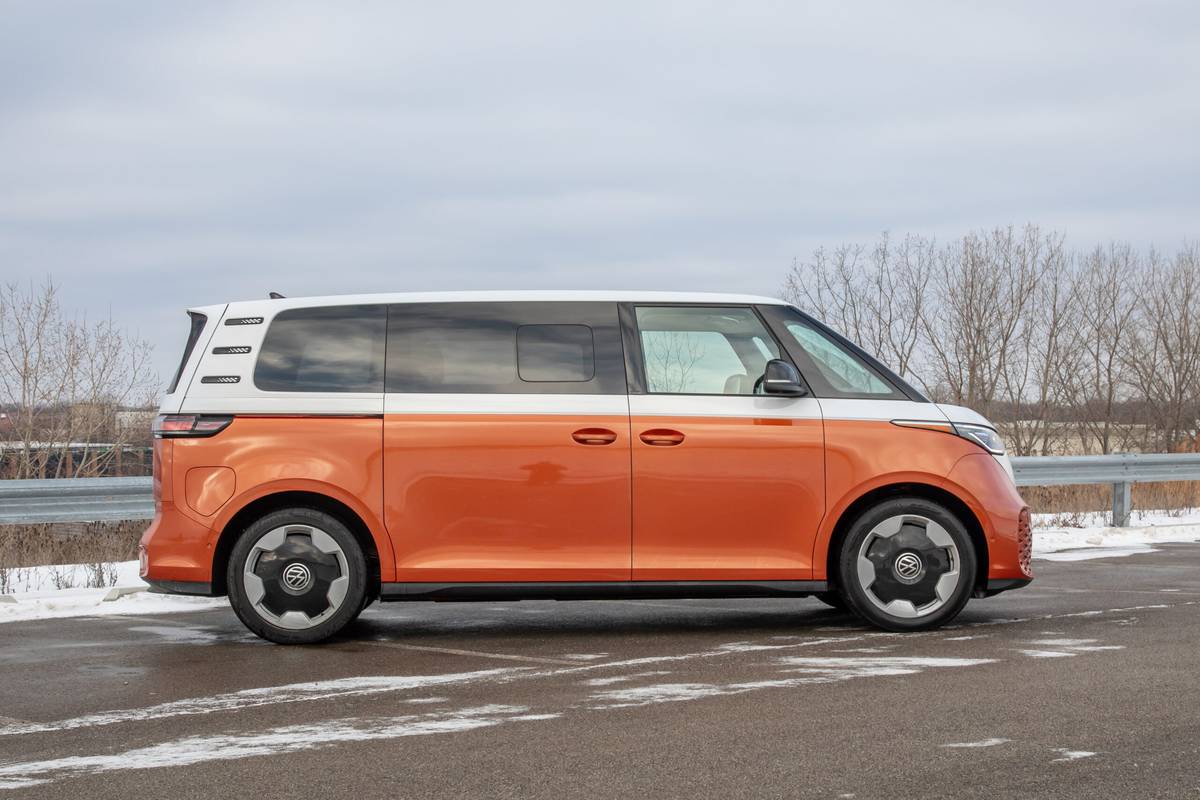

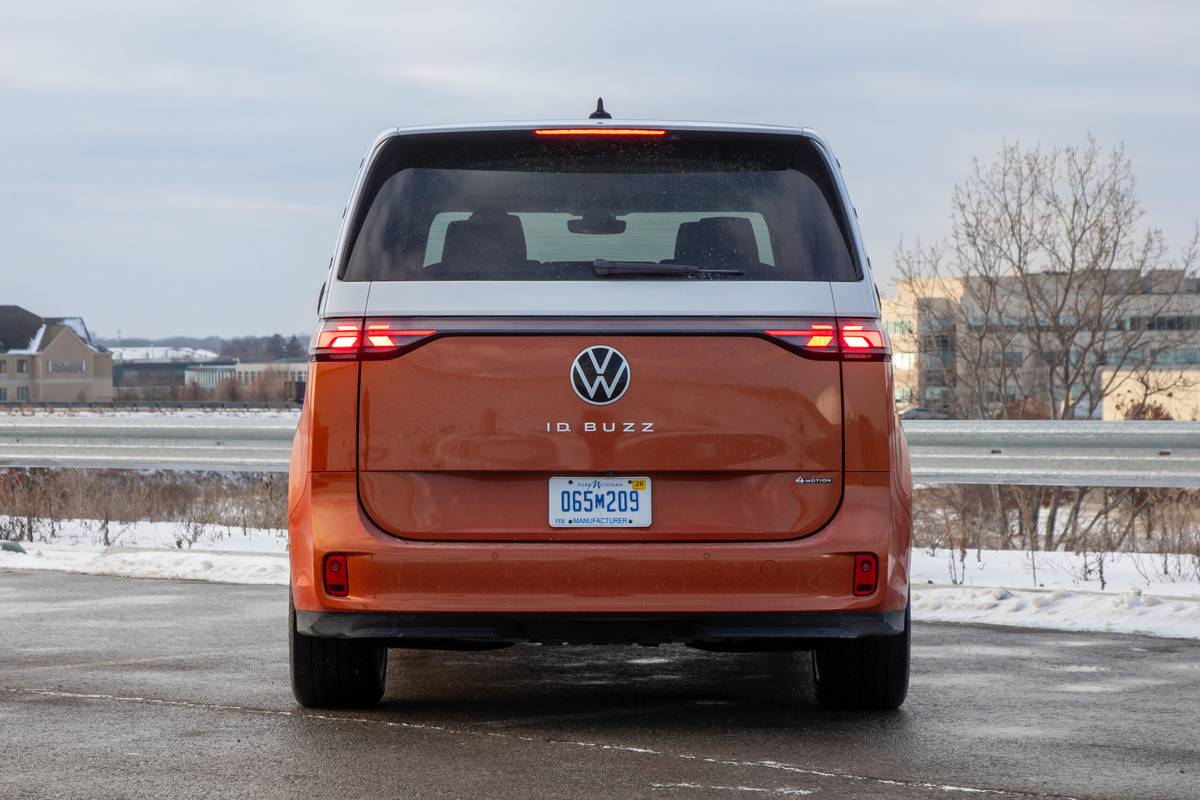
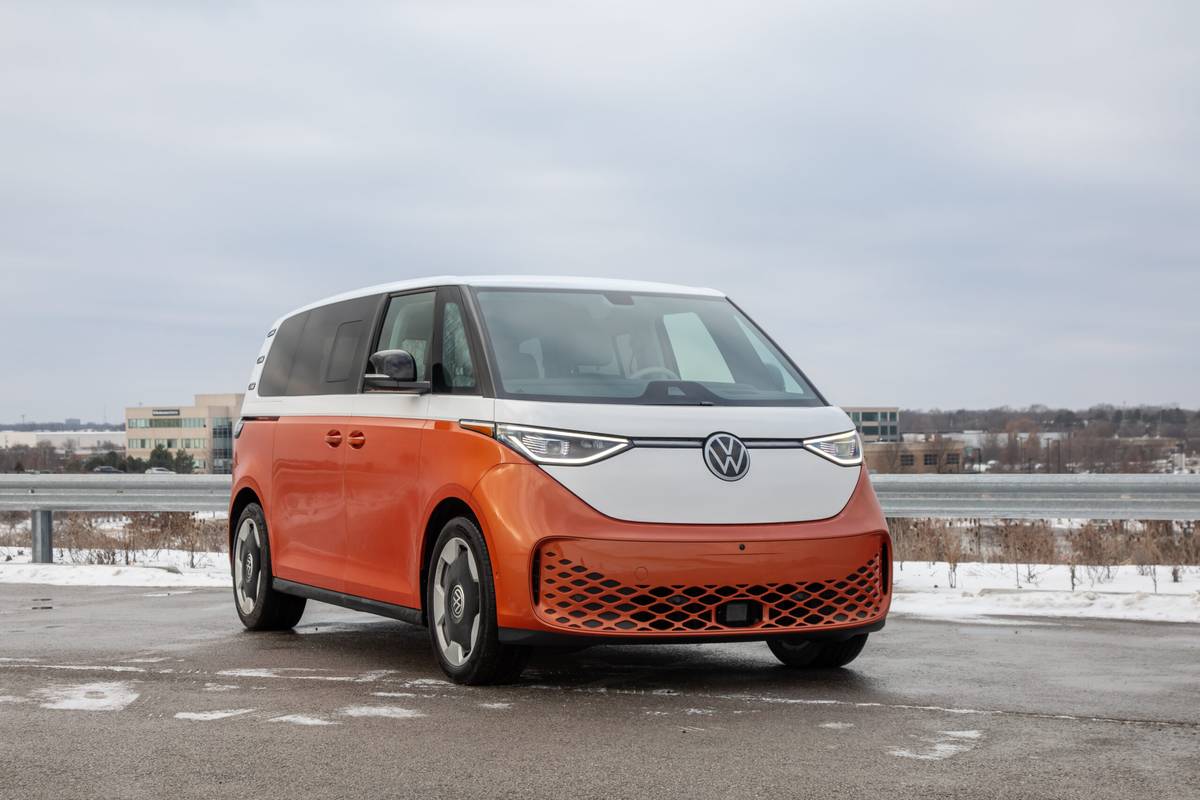
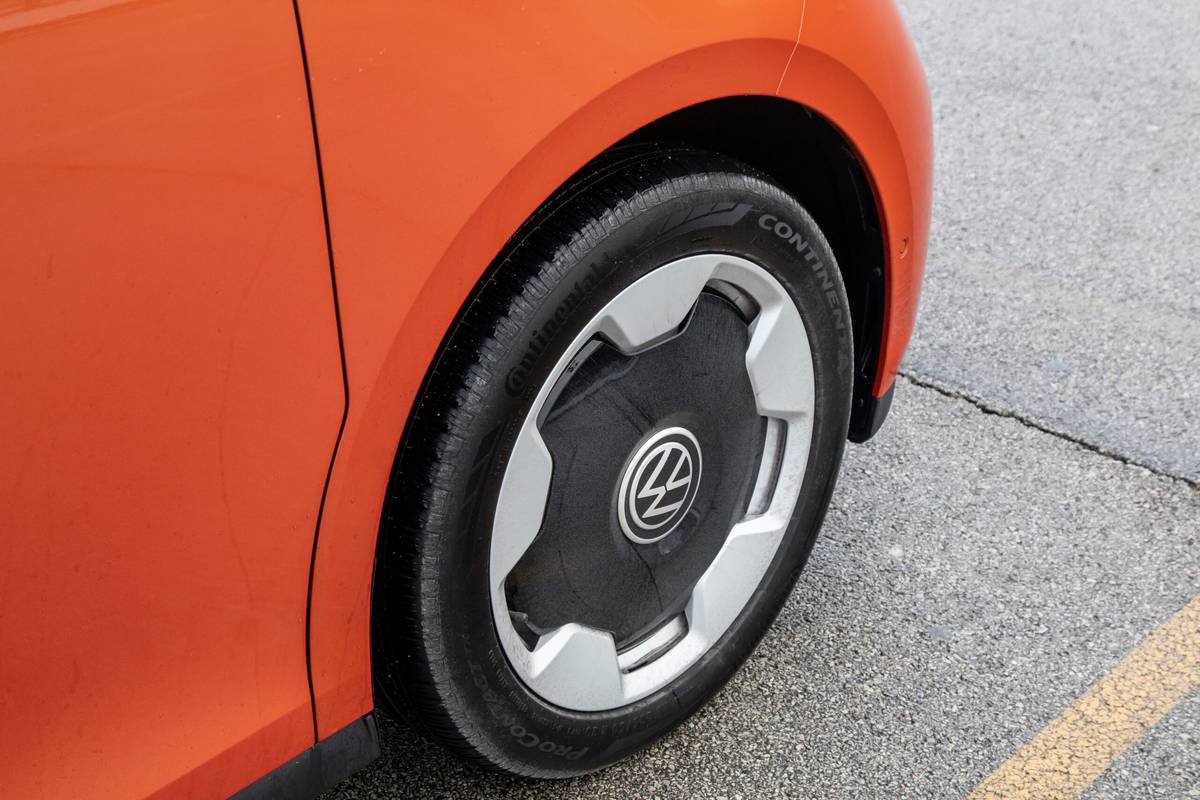
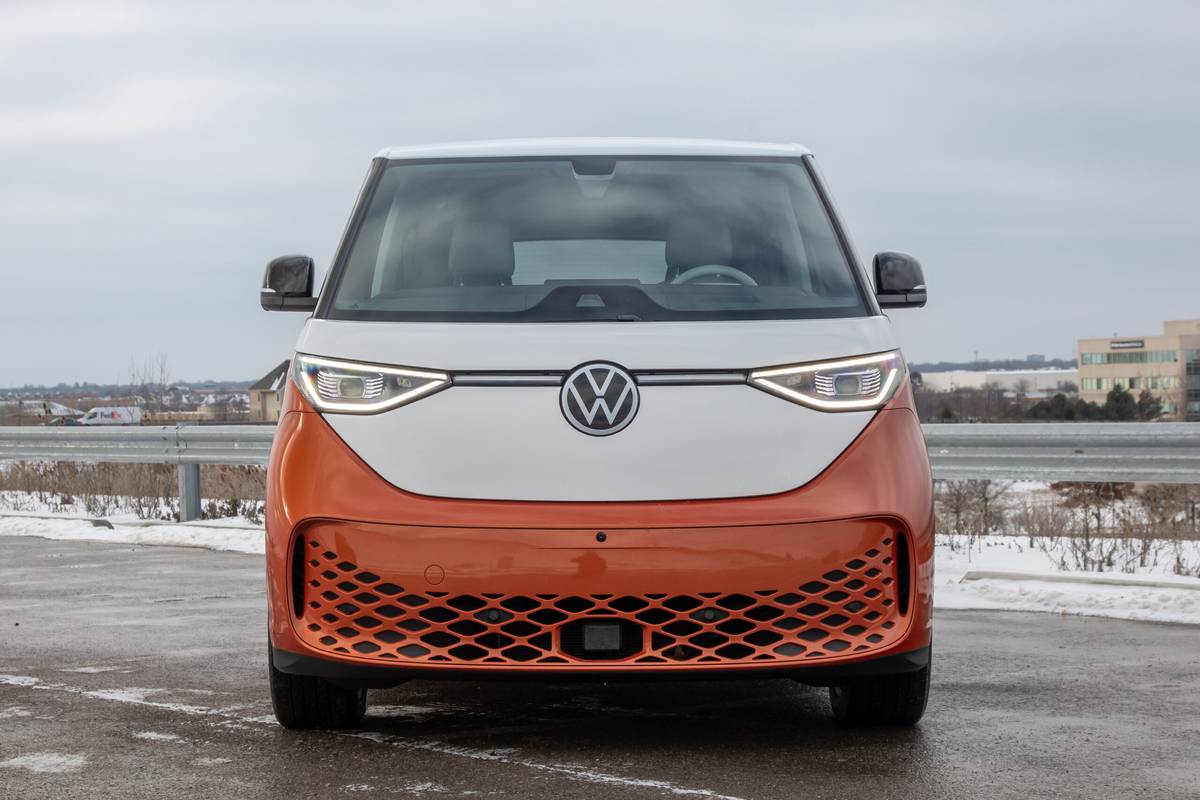






As for the Kia, if you like the idea of a three-row crossover that’s electric, the EV9 is about as close as you’re going to get to that experience. It has the driving position and outward visibility of a conventional SUV (but the left-side B-pillar is big and blocked my view) and mostly drives like one. Its suspension isn’t as refined as the VW’s (it makes more noise when traveling on bumpy, broken pavement and seems more rattly in general), but the EV9 offers more regenerative-braking levels, including a one-pedal driving mode.
BN: The ID. Buzz has a heavier listed curb weight than the EV9 and, even in its most powerful AWD configuration, less output (335 hp to 379). Even so, I found it quick enough in all driving modes for stop-and-go city driving, and it’s also responsive enough to merge onto the highway quickly and execute passing maneuvers without too much difficulty.
The ride is well composed, though firm, and the cabin is quiet save for some wind noise at higher speeds. The ID. Buzz behaves every bit like the pleasant cruiser it’s meant to be. All that’s missing is one-pedal driving, which would make the experience even more pleasant. The B mode works down to an almost stop but can lead to some jerky stops if you don’t start applying brake pressure before the regenerative braking quits.
Outward visibility is, somewhat surprisingly to me, not a strong suit. It’s OK out the front, but the seating position and windshield design make for an interesting combination, as do the two front pillars on each side. Rear visibility is fine as long as the third-row head restraints are pushed down, but having passengers or forgetting to do that obscures the rear view, and there’s no rearview camera mirror to compensate.
The Kia, meanwhile, goes from being the comfortable choice the last time we compared it against another EV, a 2024 Rivian R1S, to the noisier and harsher riding choice in this comparison. Compared to the VW, tire and wind noise is extremely noticeable, and the suspension can’t keep harsh bumps from intruding into the cabin, either.
The VW might have an edge in off-the-line responsiveness, but the EV9 will eventually overpower it and is the relatively sportier choice here. More important to me, the Kia’s different drive modes have a more noticeable effect on the driving experience — Eco feels slow, Sport feels sporty — which may be why VW didn’t make them so easy to change.

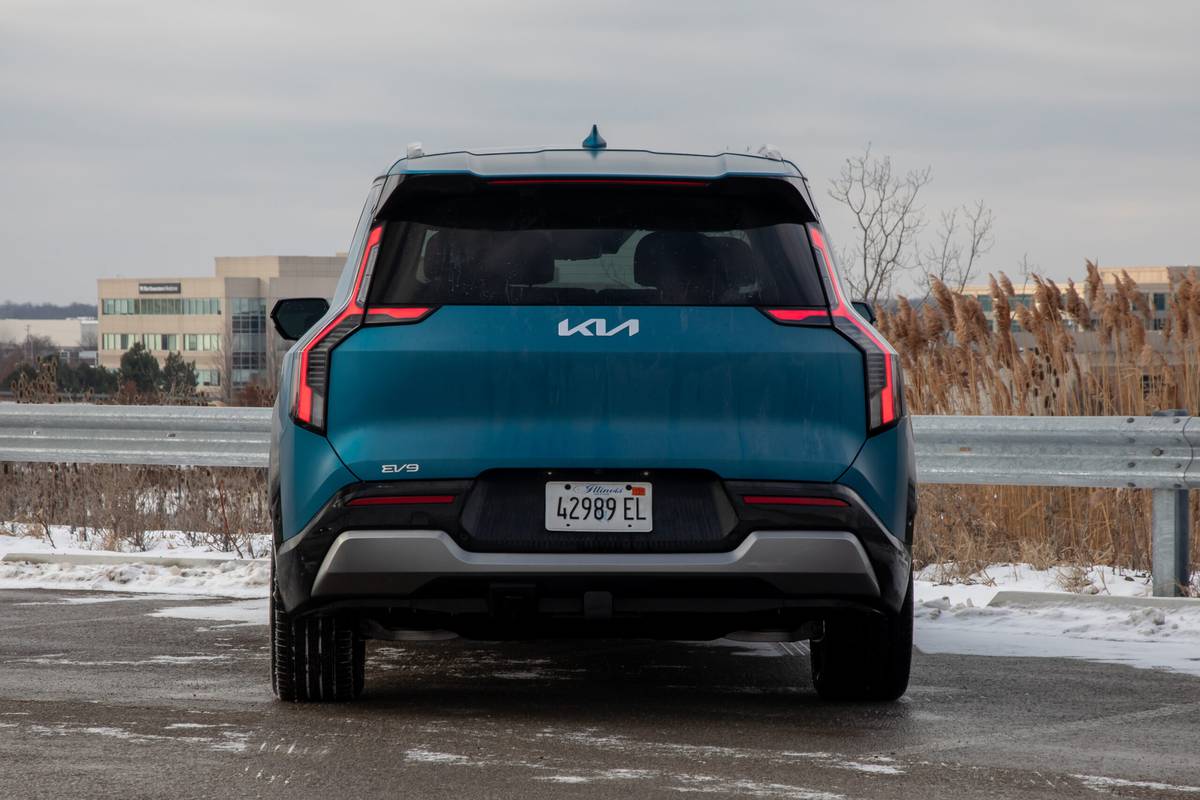
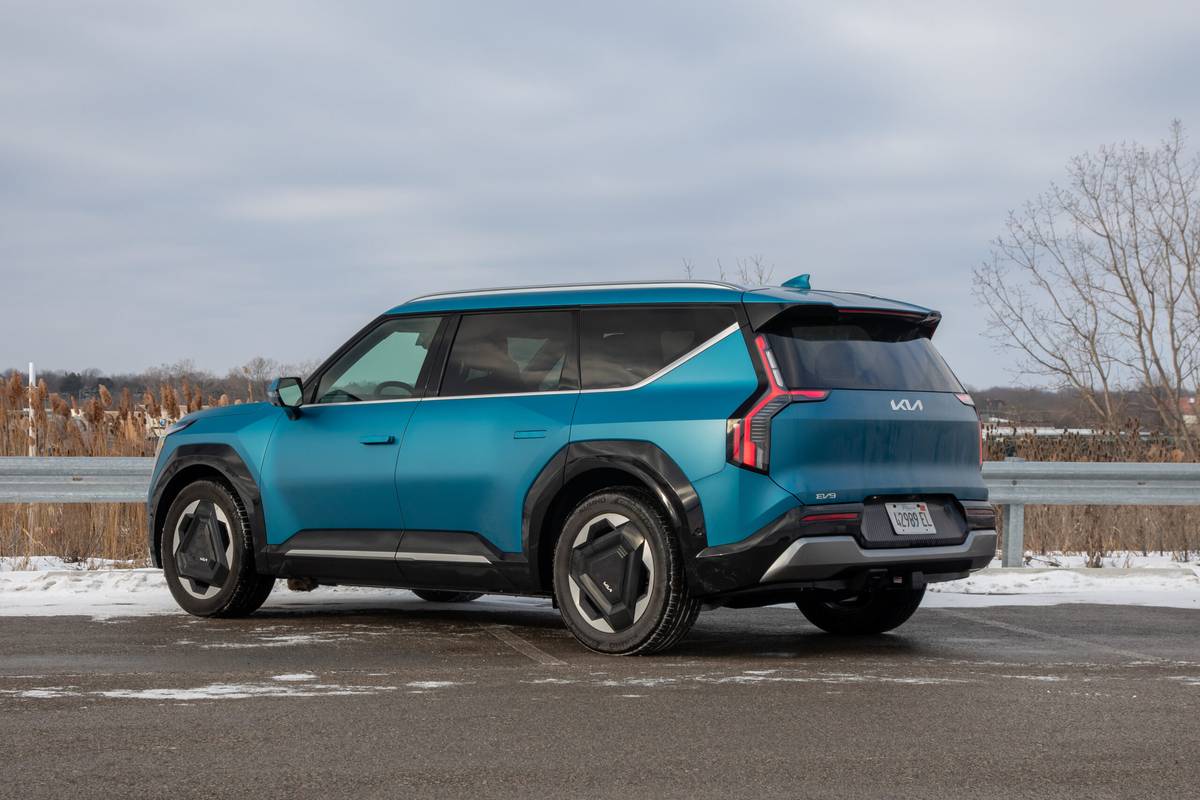
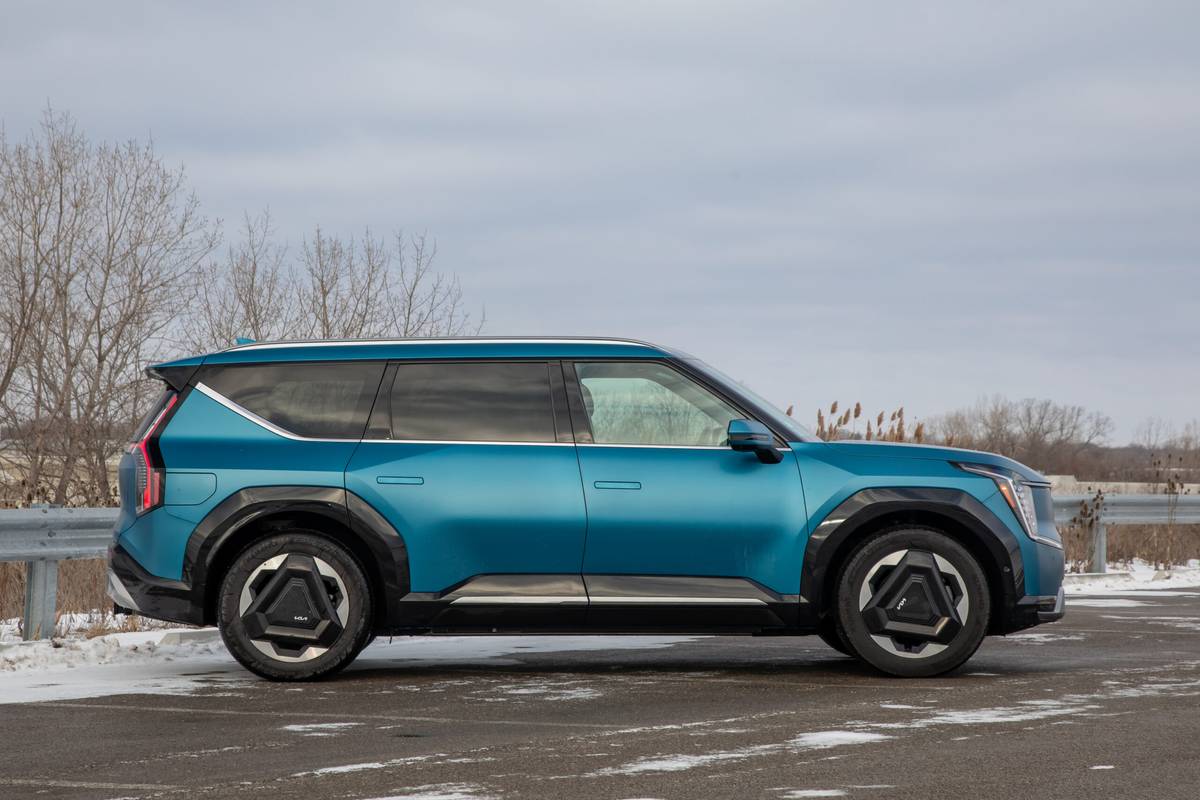
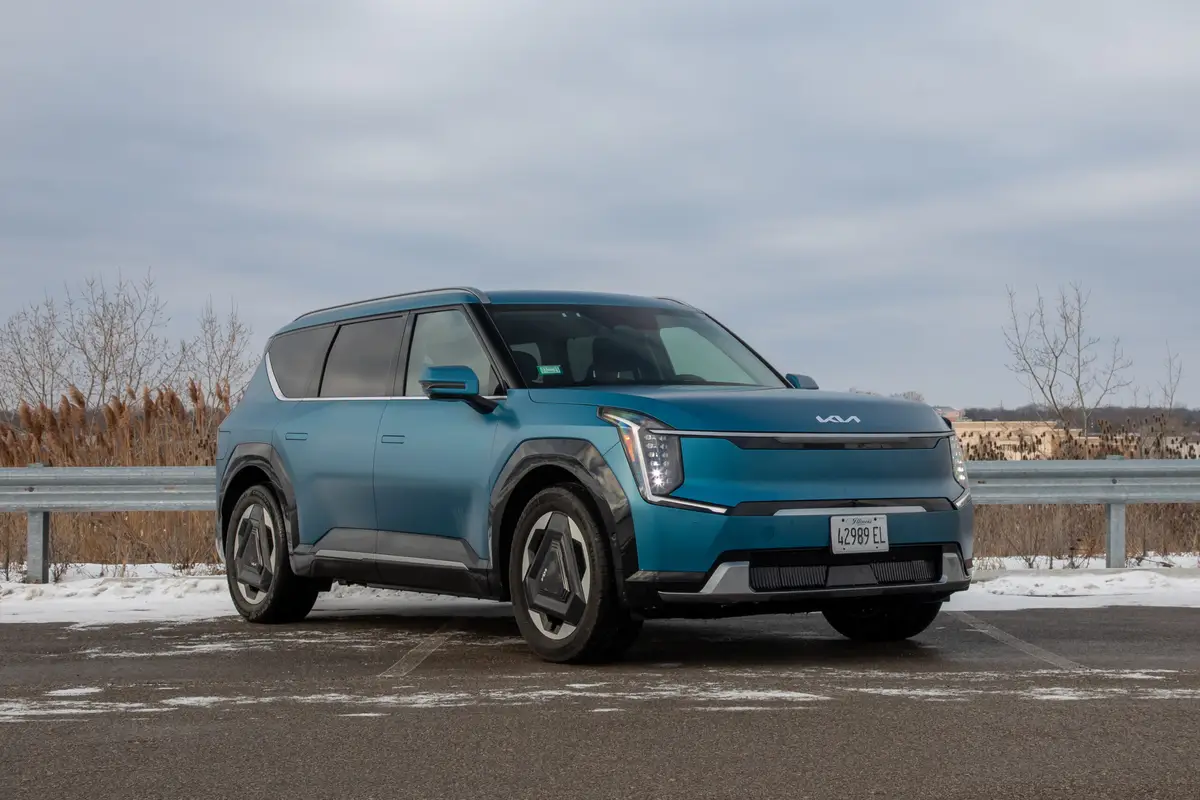





Forward visibility is good and maybe even a little better than the VW, rear visibility is much better, and there’s a camera mirror if your view is blocked by people or cargo. Kia’s blind spot camera views also add confidence.
Cold-Weather Efficiency: EV9
The verdict: The EV9 was slightly more efficient than the ID. Buzz on our cold-weather efficiency drive, averaging 2.1 miles per kWh to the VW’s 1.8 miles per kWh, but the Kia’s greater driving range is an even bigger asset when temperatures dip below freezing.
To test the efficiency of these two EVs in cold weather, we took them on the same roughly 110-mile drive route consisting mostly of interstate highways and country roads. We drove the EVs as we would any other vehicle, with the climate systems in Auto mode and set at a reasonable cabin temperature. Outside temperatures were well below freezing for the drive, showing 17 degrees Fahrenheit at the start and 21 degrees at the end.
We topped up both EVs’ batteries before the start of the drive, with the EV9 showing 249 miles of range to the ID. Buzz’s 198 miles. Both numbers are roughly 30 miles less than the vehicles’ EPA range estimates, and the combination of the drive route’s higher speeds and the cold temperatures ended up consuming available range at a fast clip.
At the end of our route, the Kia had traveled 113 miles but had consumed 135 miles of estimated range, resulting in 114 miles of remaining range. The ID. Buzz traveled 111 miles but consumed 150 miles of range and had just 48 miles of remaining range at the end of the drive. Neither vehicle would be our choice for a cold-weather road trip due to the frequency with which you’d have to stop and charge, but the Kia’s greater range would make it slightly more tolerable.
More From Cars.com:
- 2025 Volkswagen ID. Buzz Review: This Sparks Joy
- Is the 2025 Volkswagen ID. Buzz Really a Minivan?
- How Well Does the Kia EV9 Work for a Cold-Weather Road Trip?
- Long-Term Kia EV9 Update: What We’ve Learned After 10,000 Miles
- 2026 Kia EV9 GT: An Electric Rocket for the Whole Family
ID. Buzz or EV9: Which Is Right for You?
Which one of these EVs will better fit your life depends on how you plan to use it. Neither is a truly serviceable road-trip vehicle, though the EV9 can get by pretty well in favorable temperatures. If you need to haul people all day, every day the ID. Buzz is a perfect choice. If you want a stylish lifestyle vehicle to add to your stable of cars, or have always wanted a futuristic VW Bus — and you can afford a spare $60,000-plus vehicle — the VW is also for you. But if you need an EV that can be a serviceable primary vehicle and people hauler, the EV9’s added range and capabilities make it a more well-rounded choice.
No matter which of these you choose, on the merits, you really can’t go wrong — or that far, especially in cold weather.
Cars.com’s Editorial department is your source for automotive news and reviews. In line with Cars.com’s long-standing ethics policy, editors and reviewers don’t accept gifts or free trips from automakers. The Editorial department is independent of Cars.com’s advertising, sales and sponsored content departments.
Featured stories
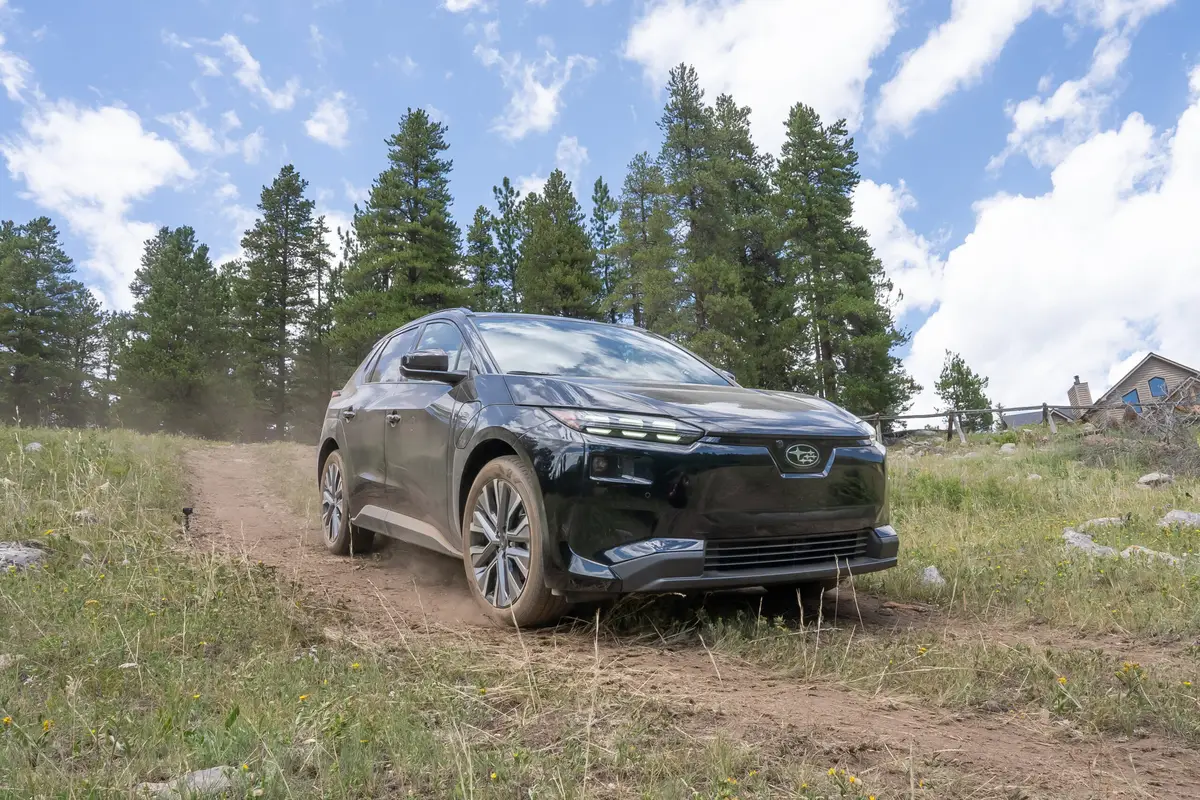
2026 Subaru Solterra Review: Necessary Improvements

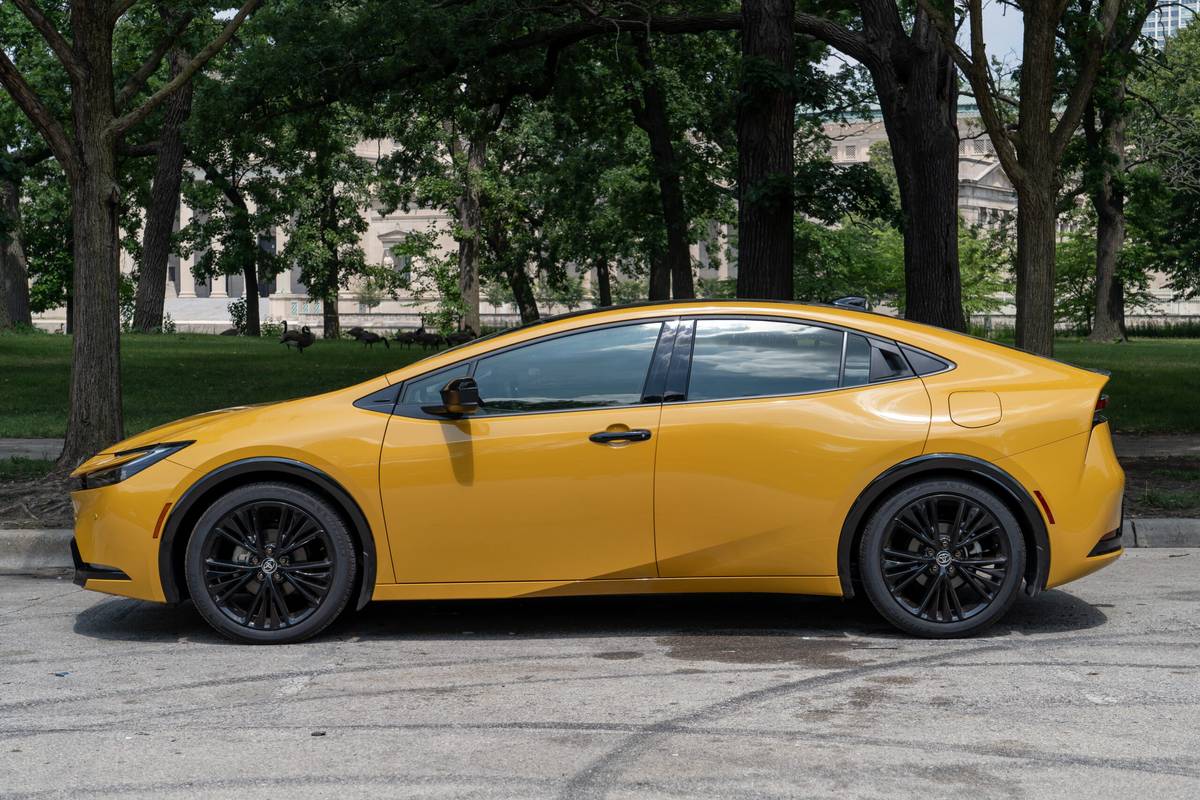
2025 Toyota Prius Review: Big on Mileage, Small on Space

